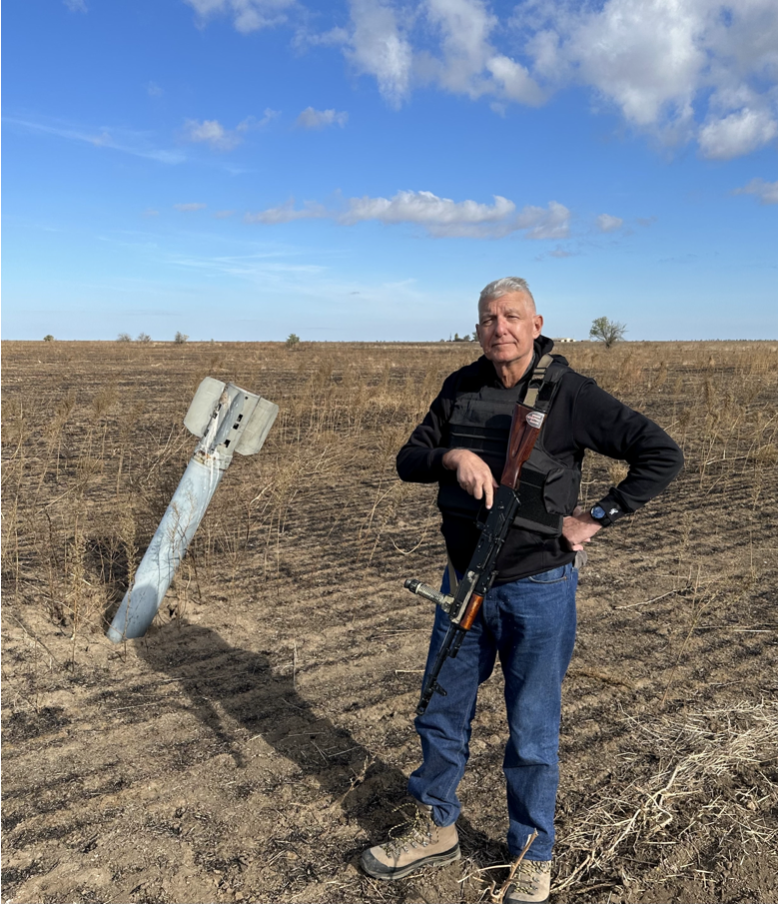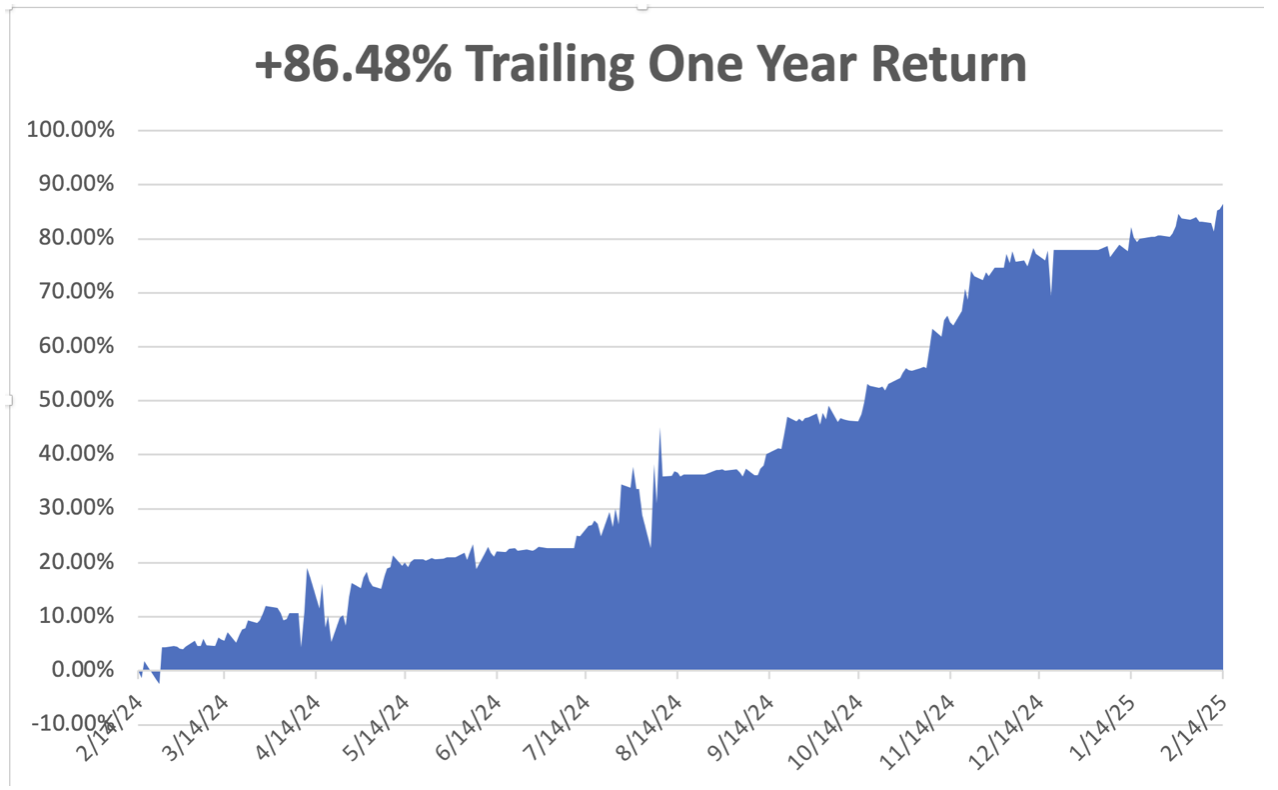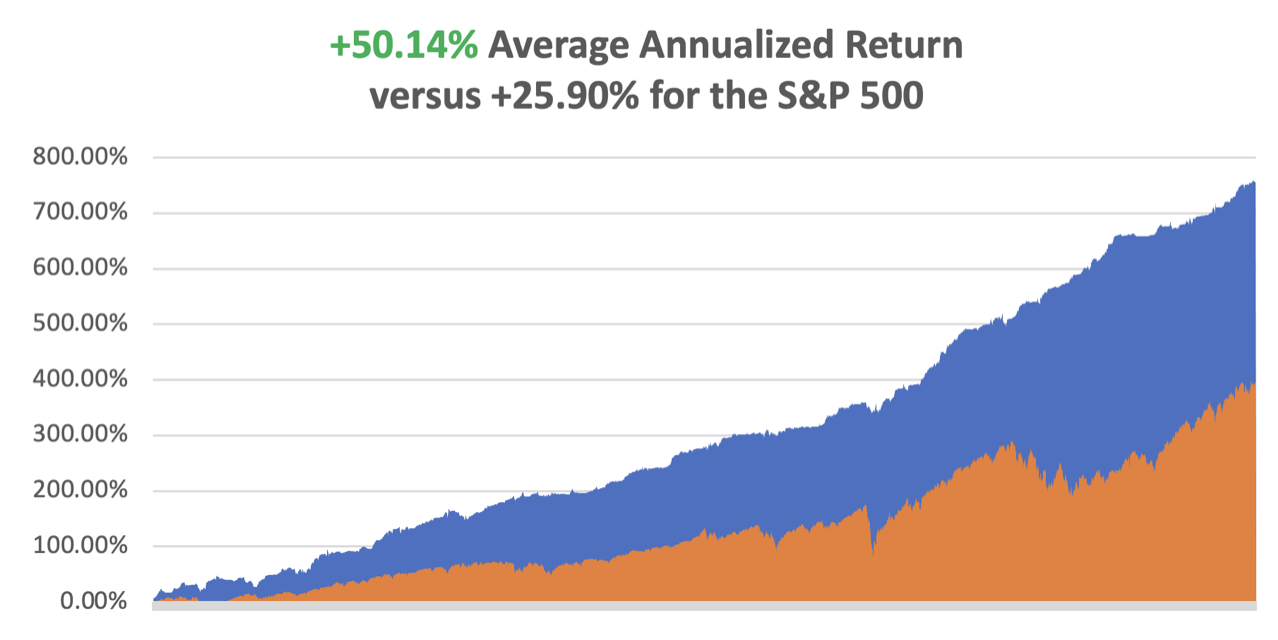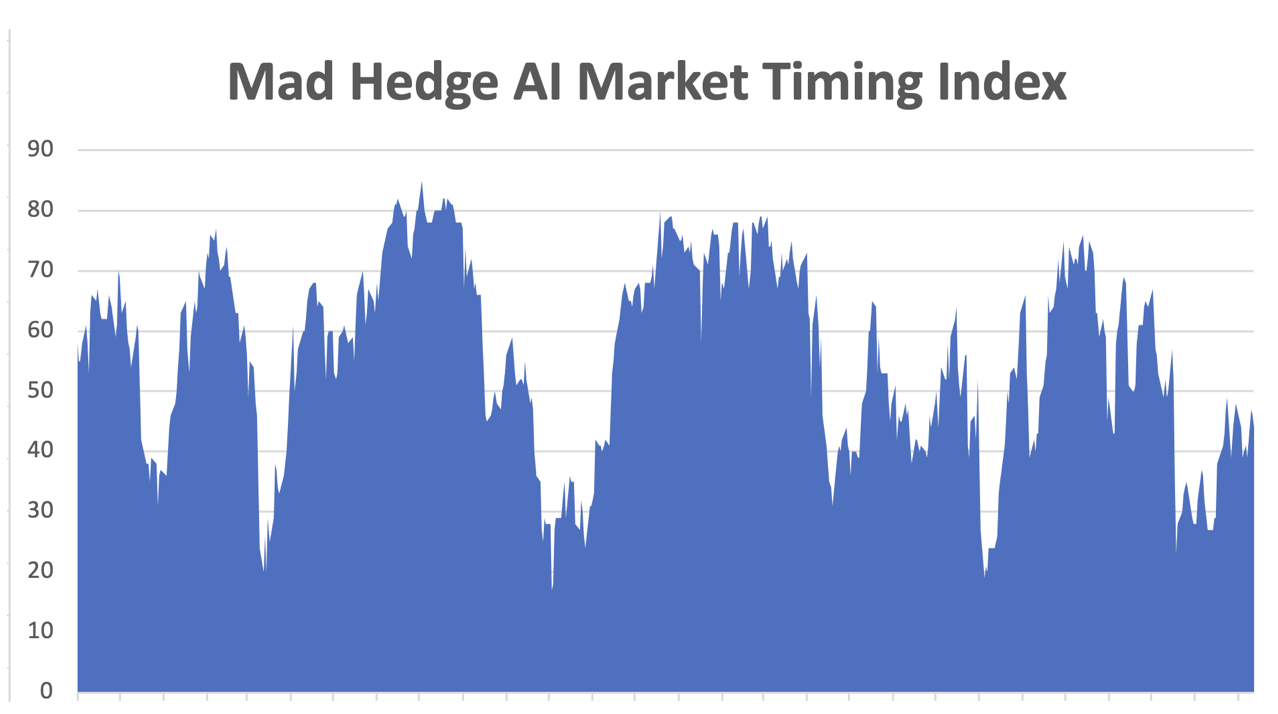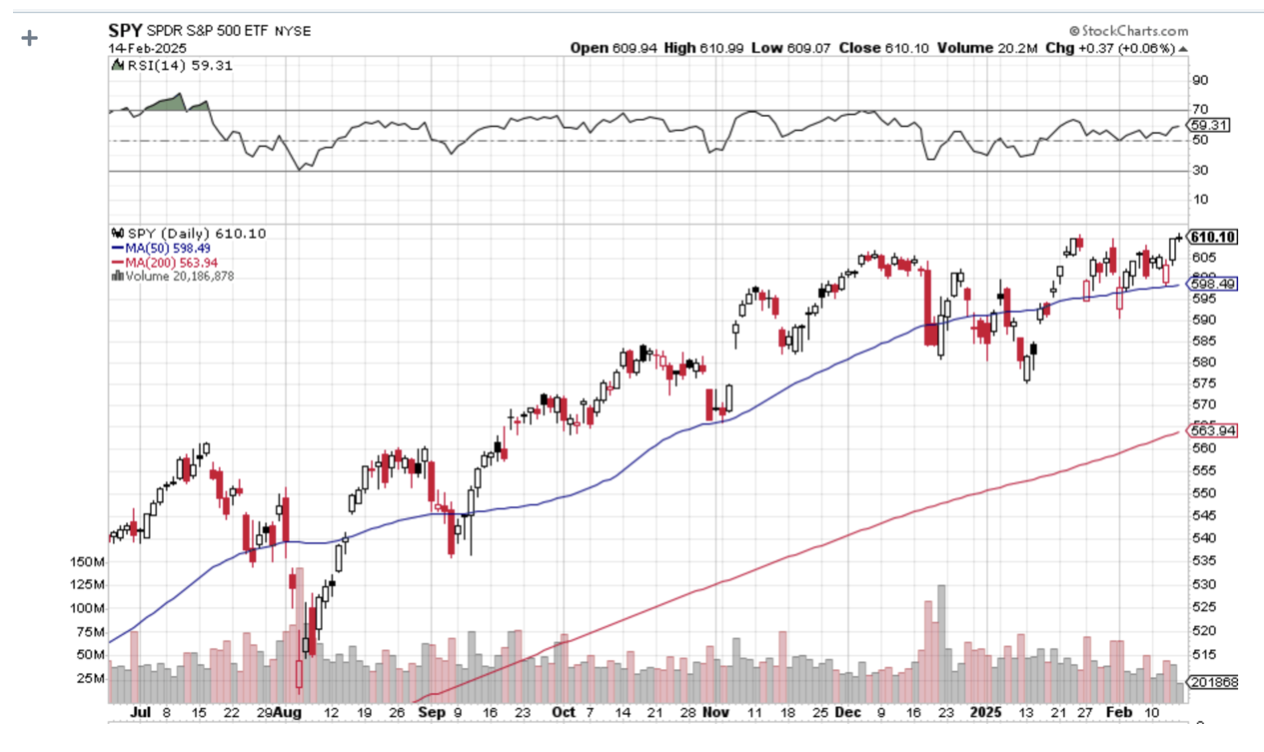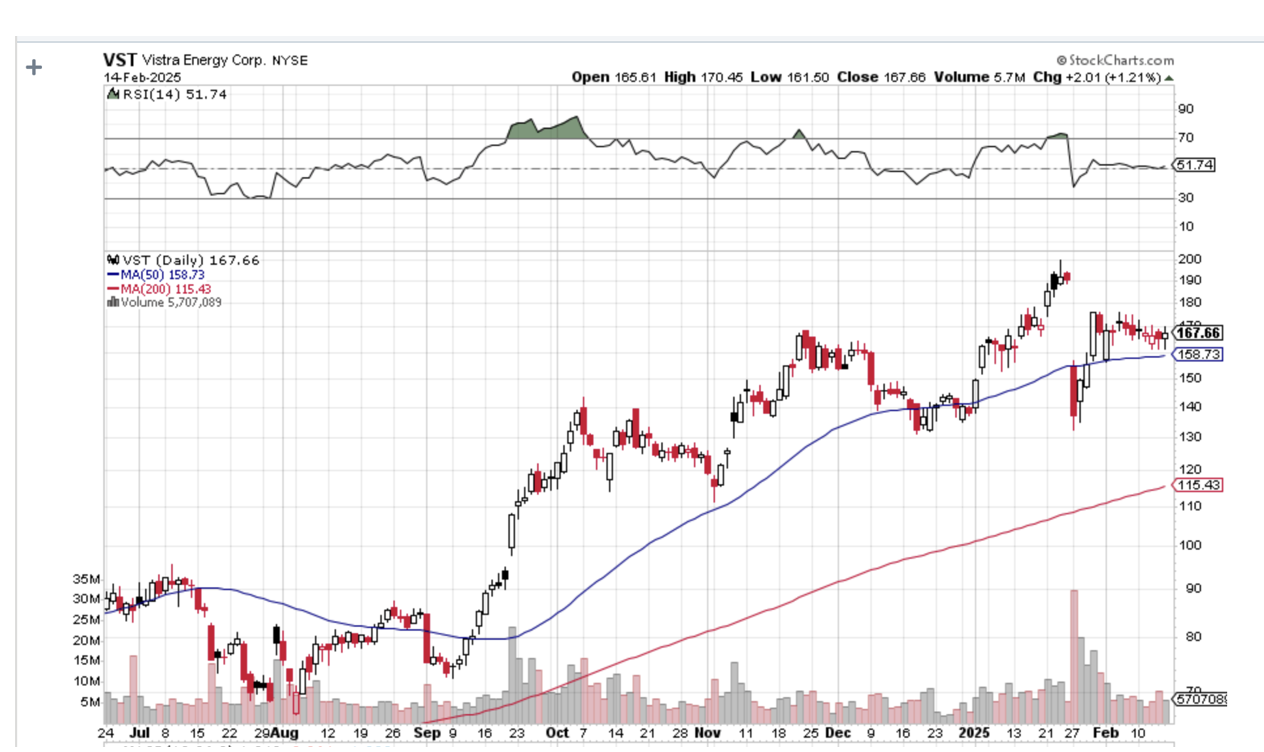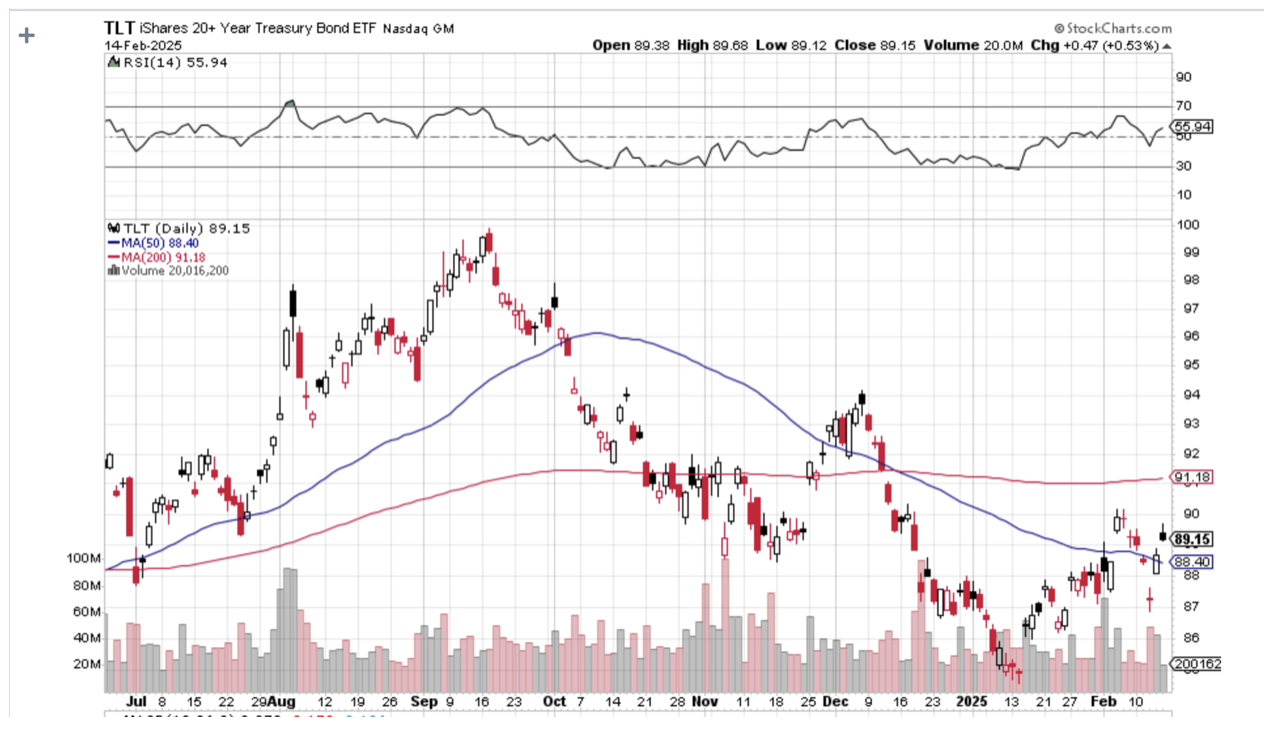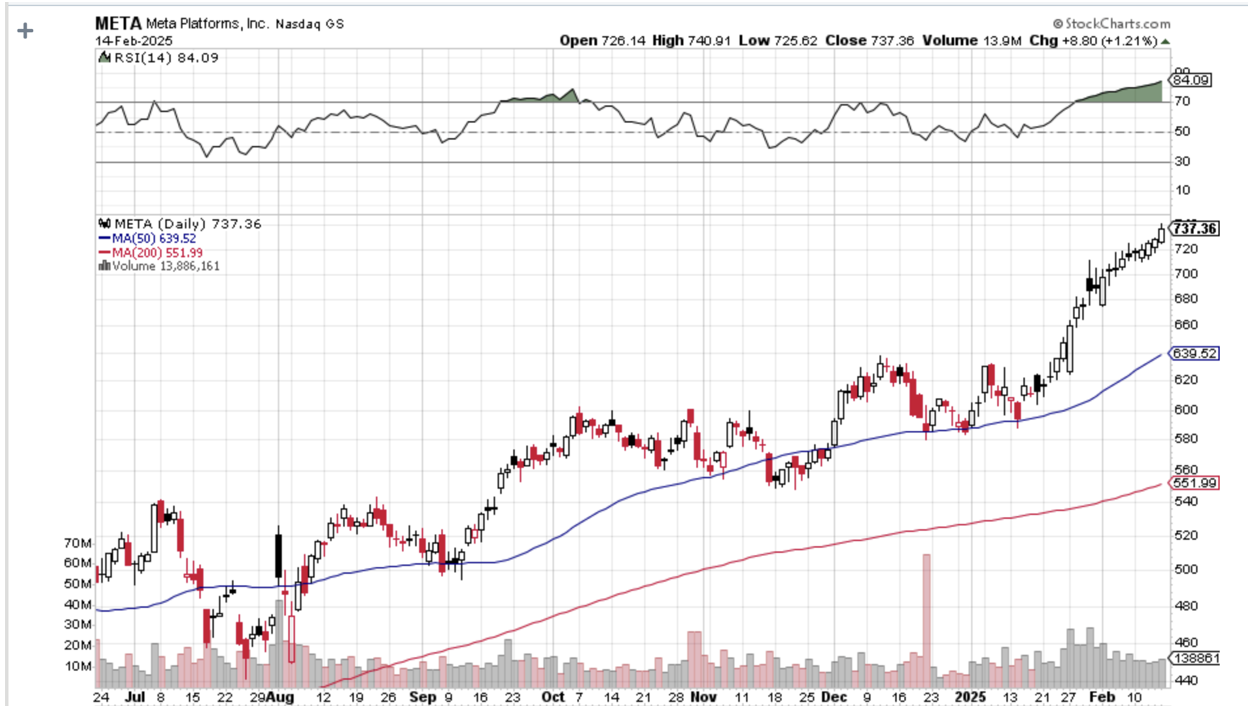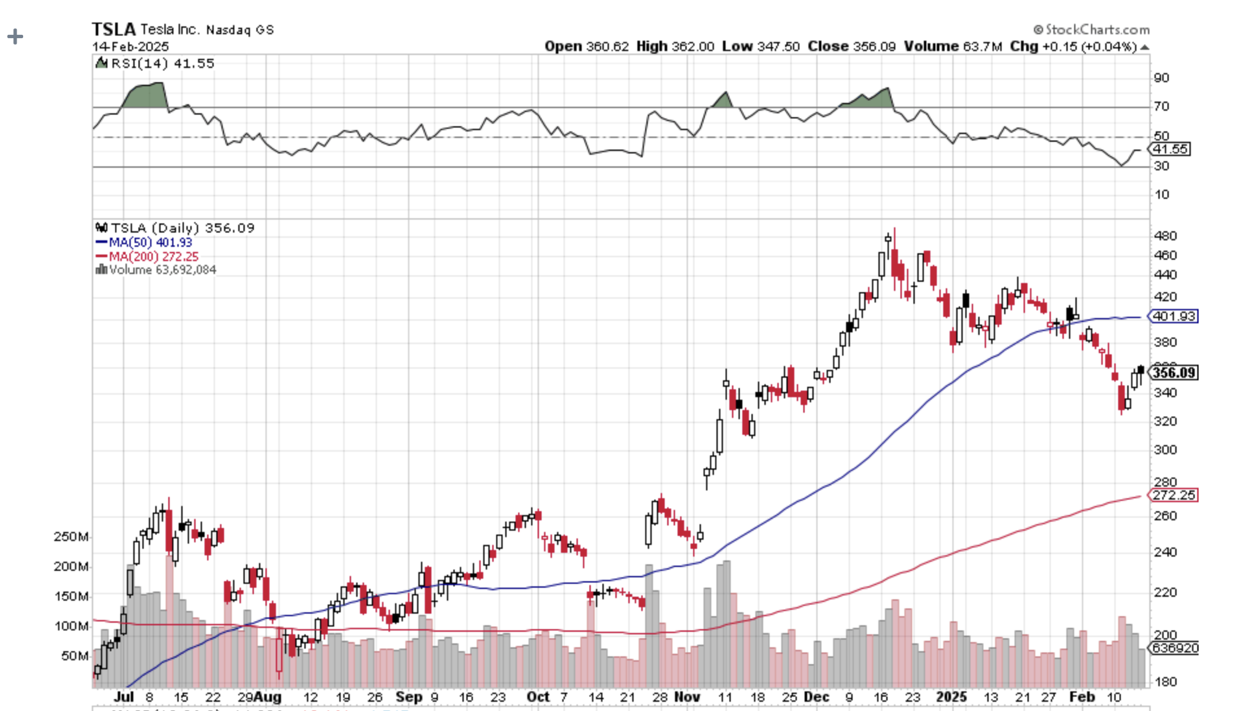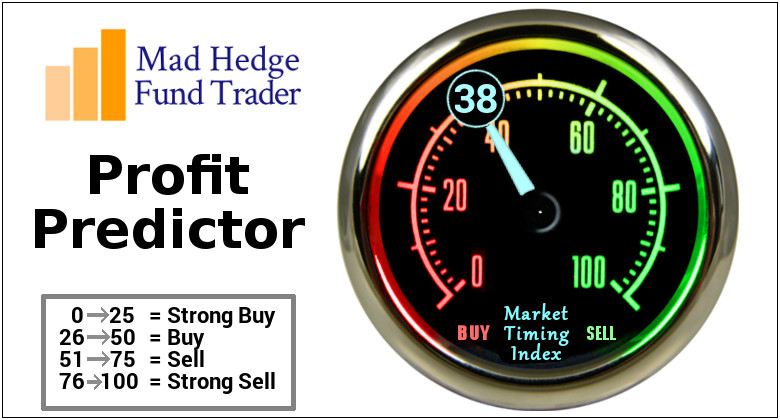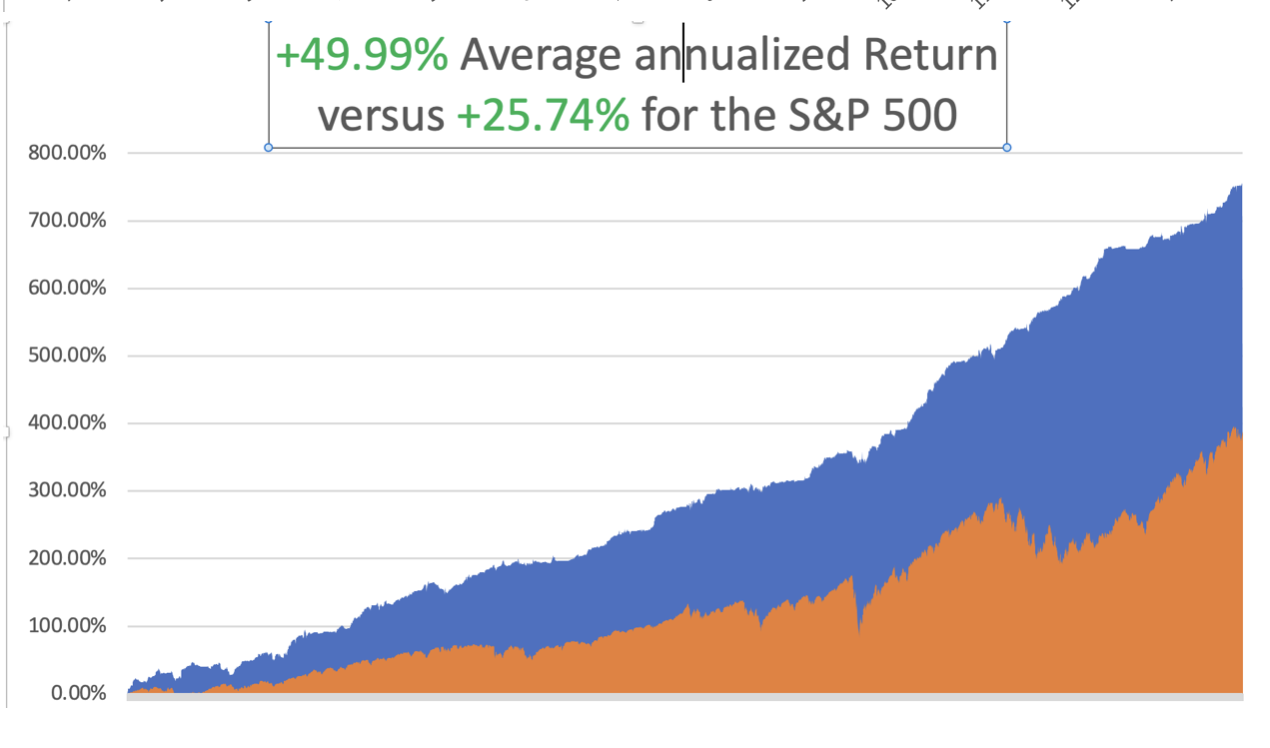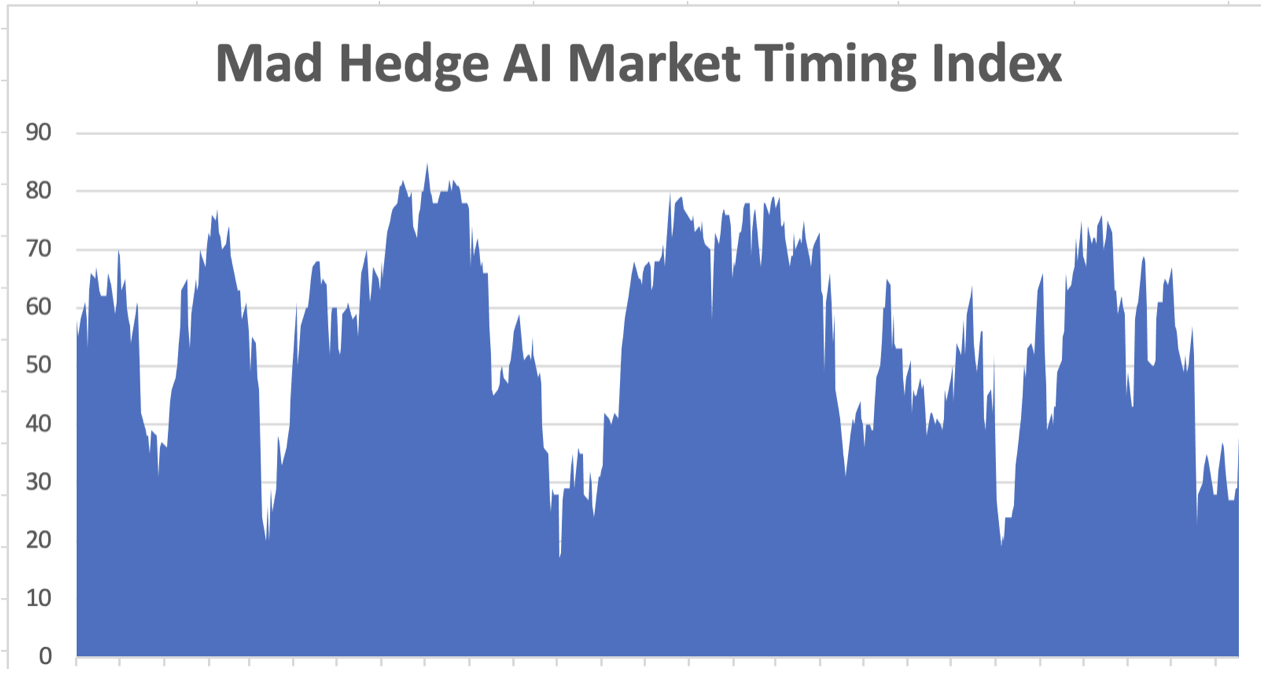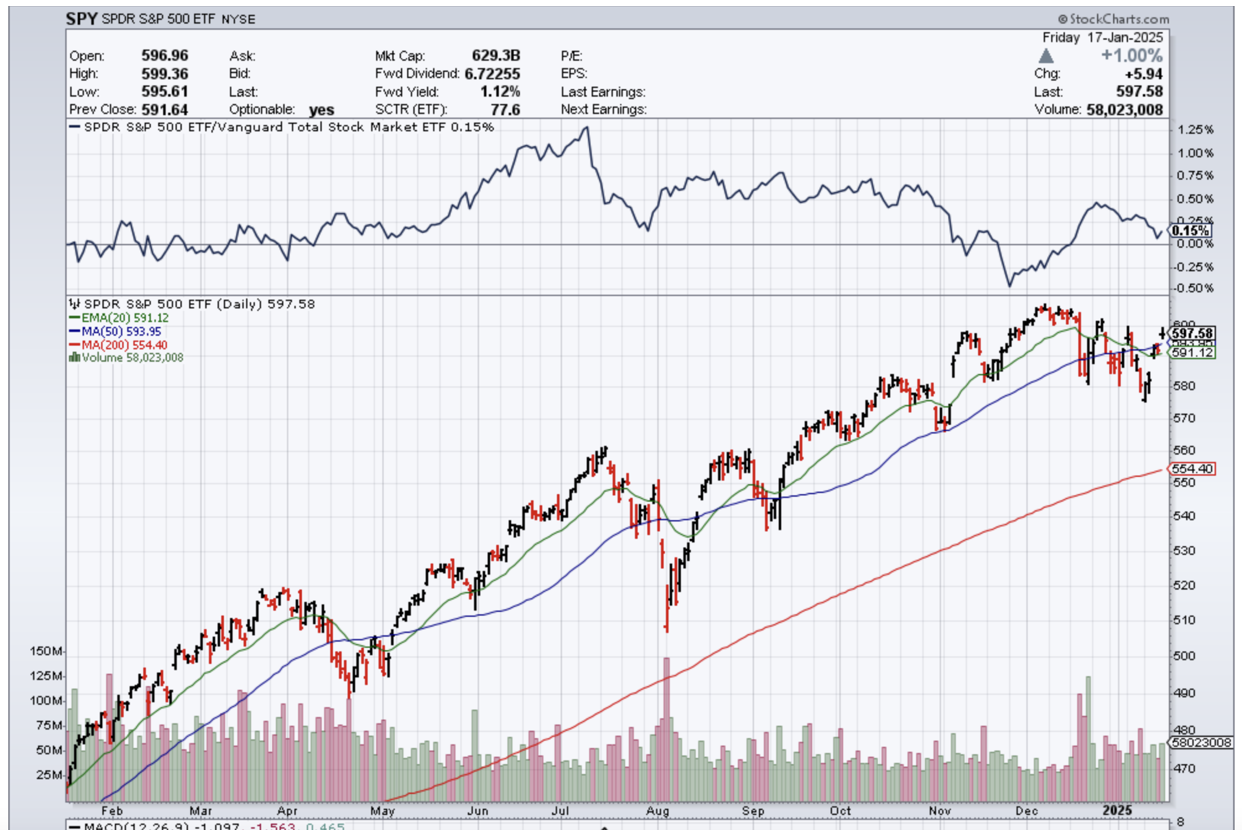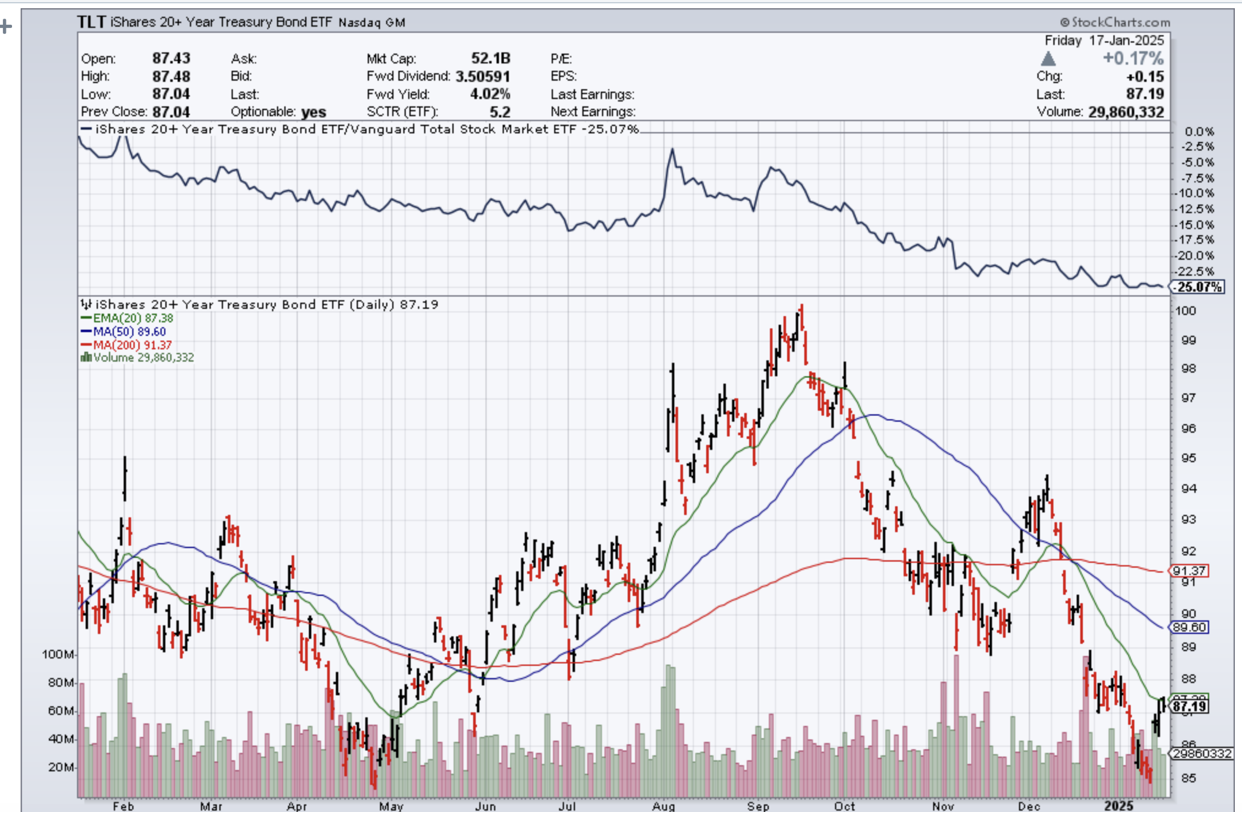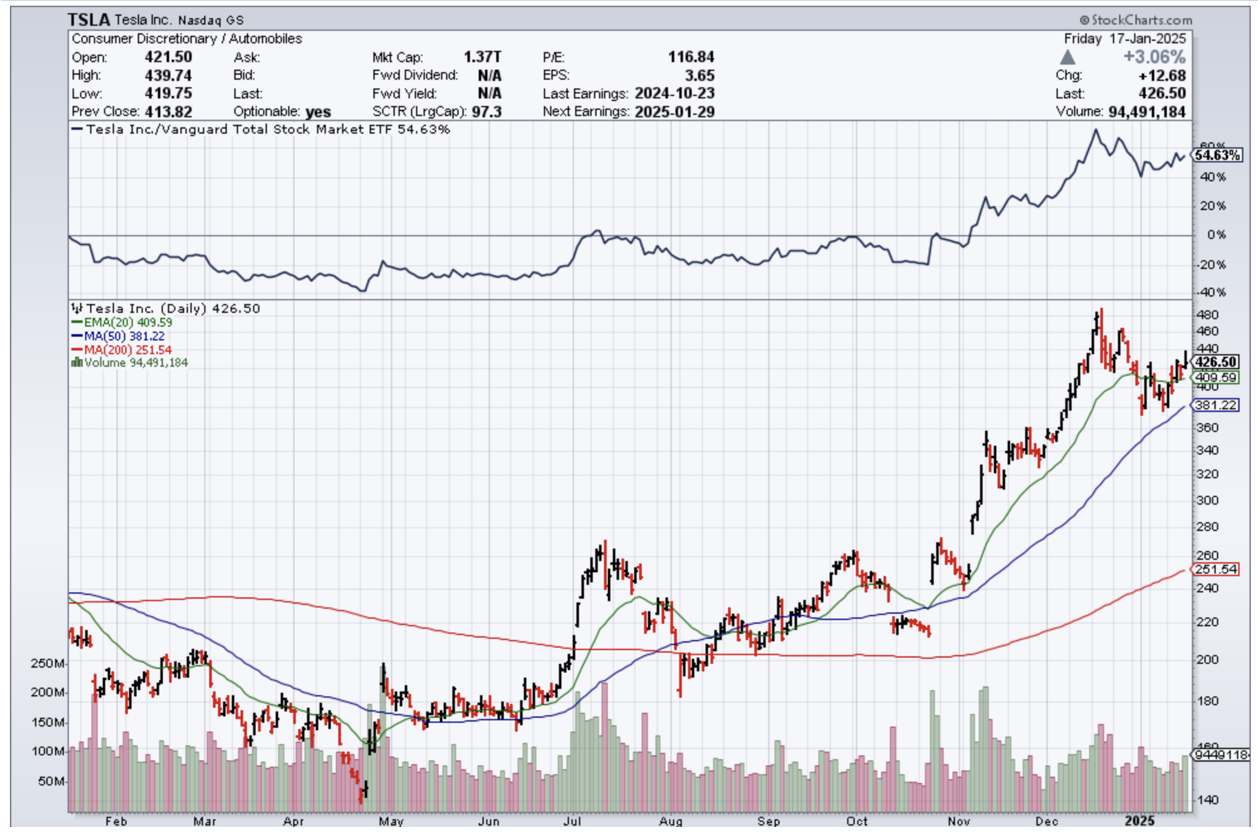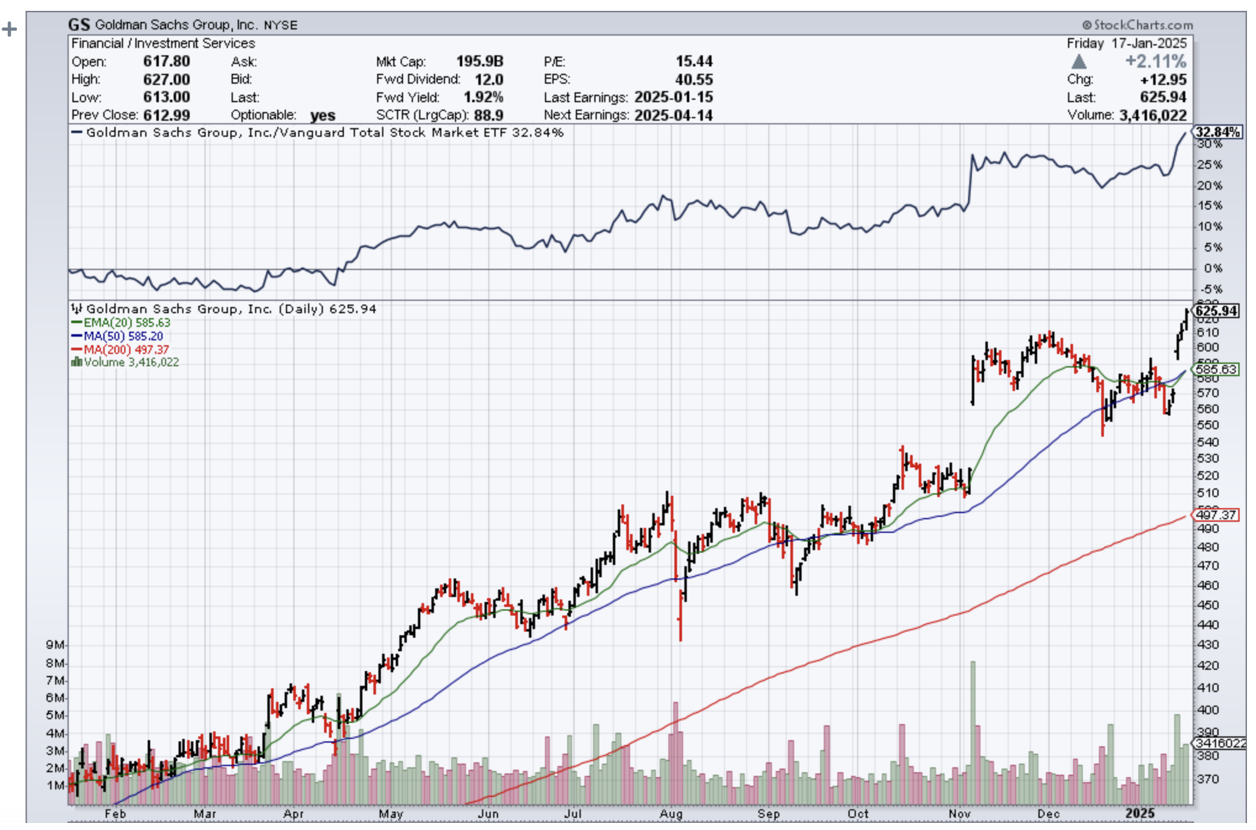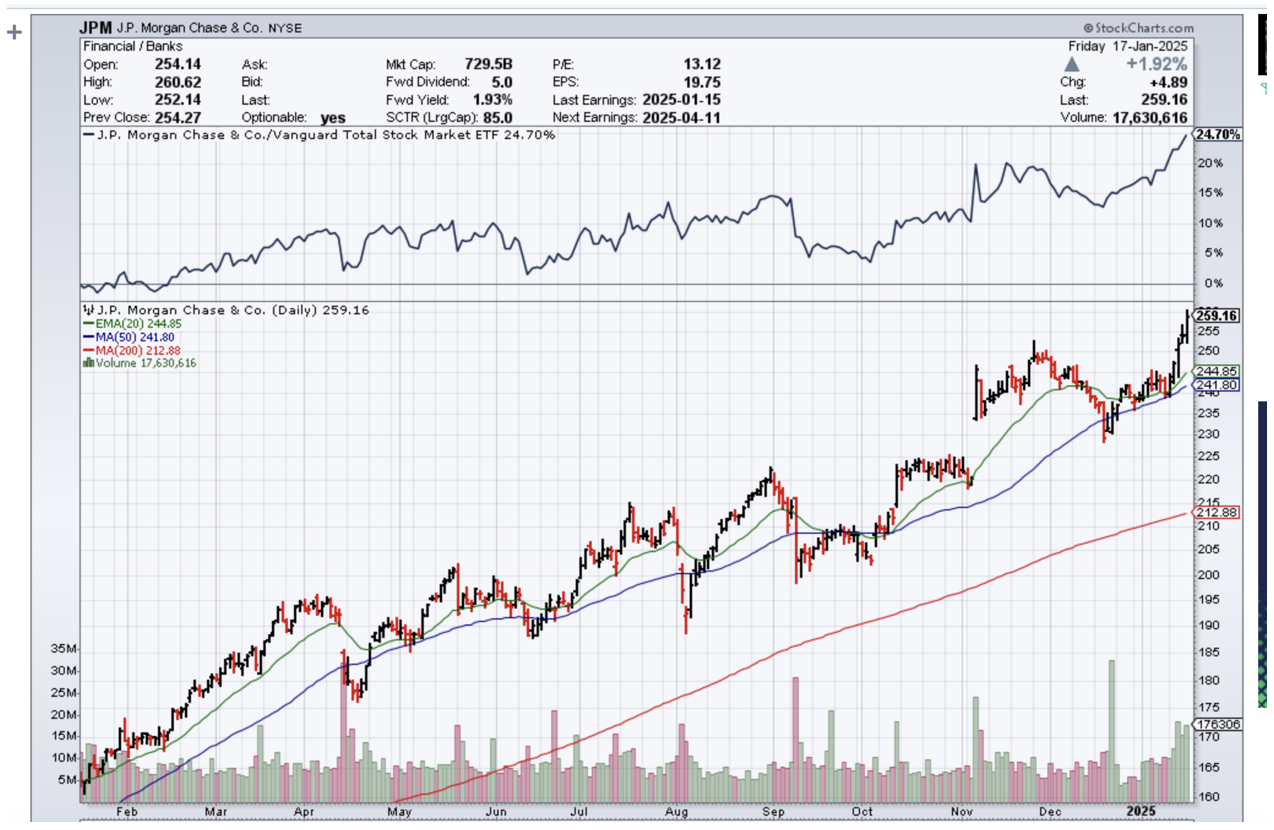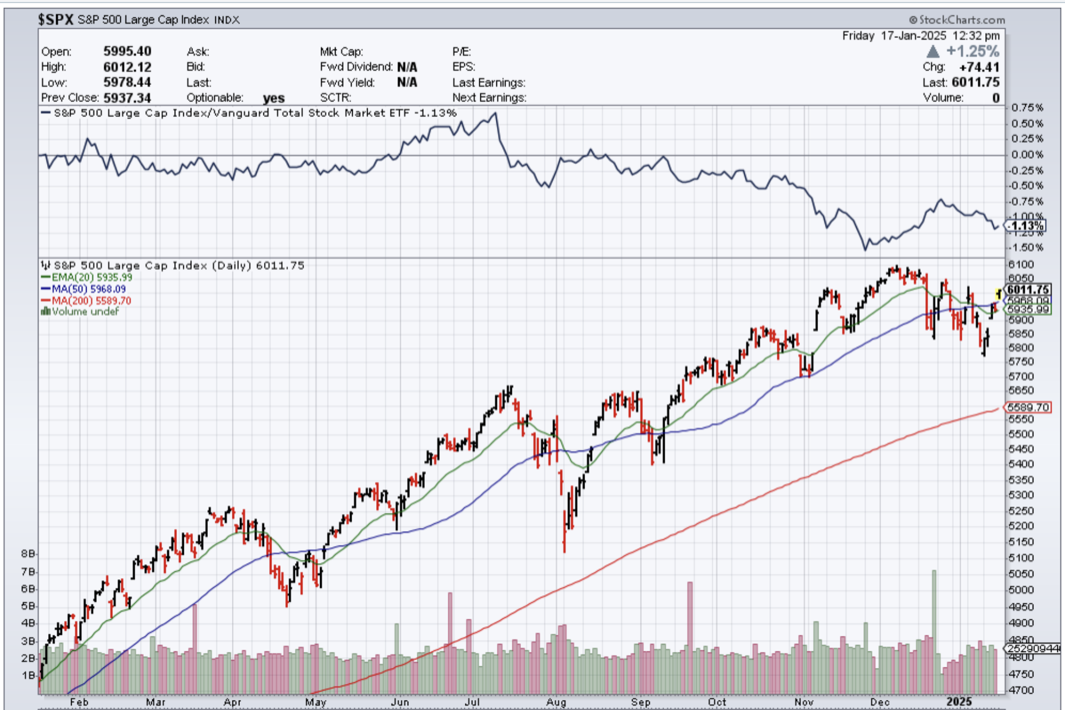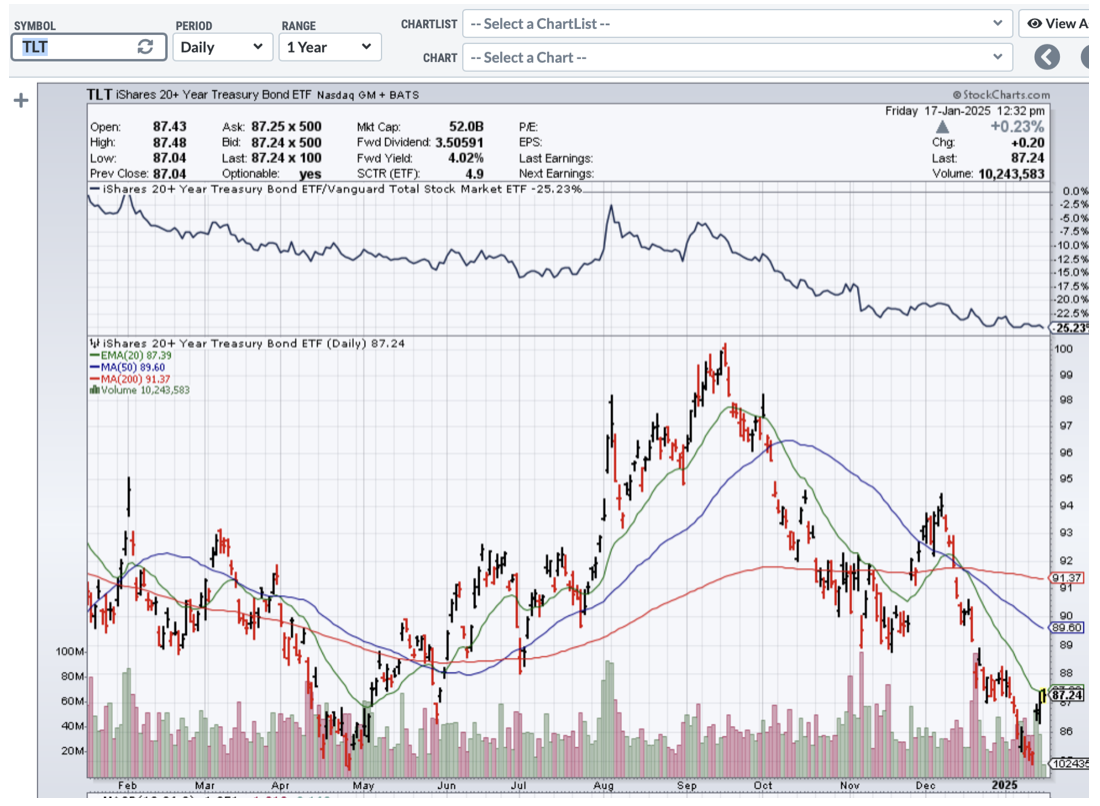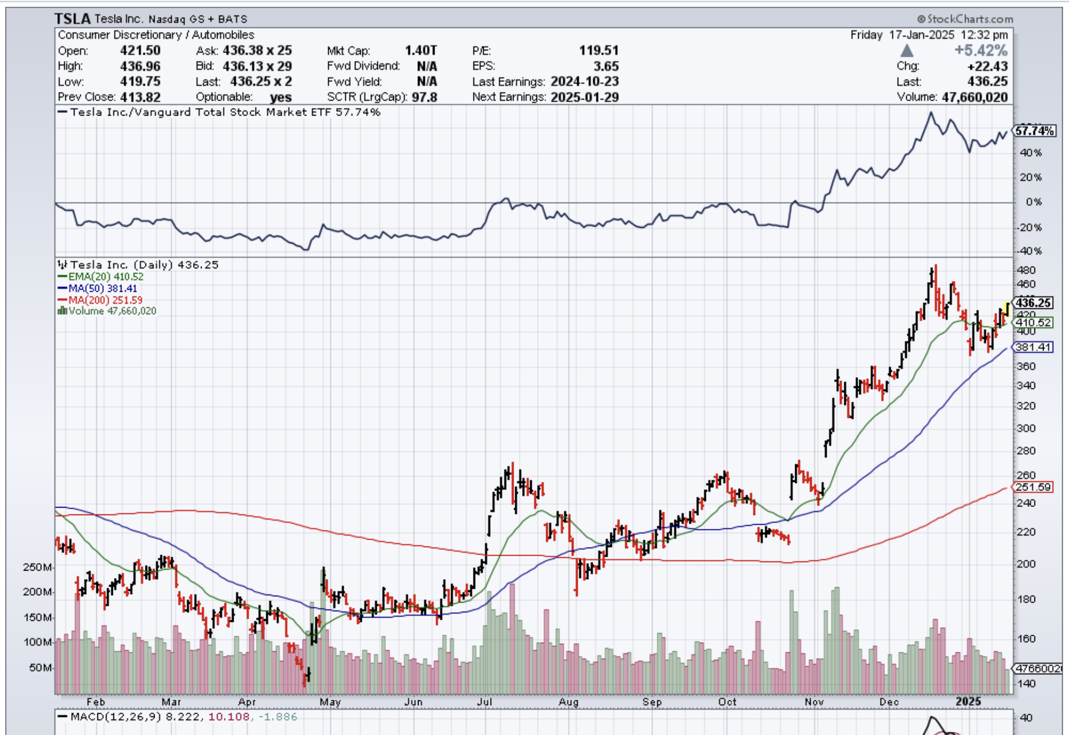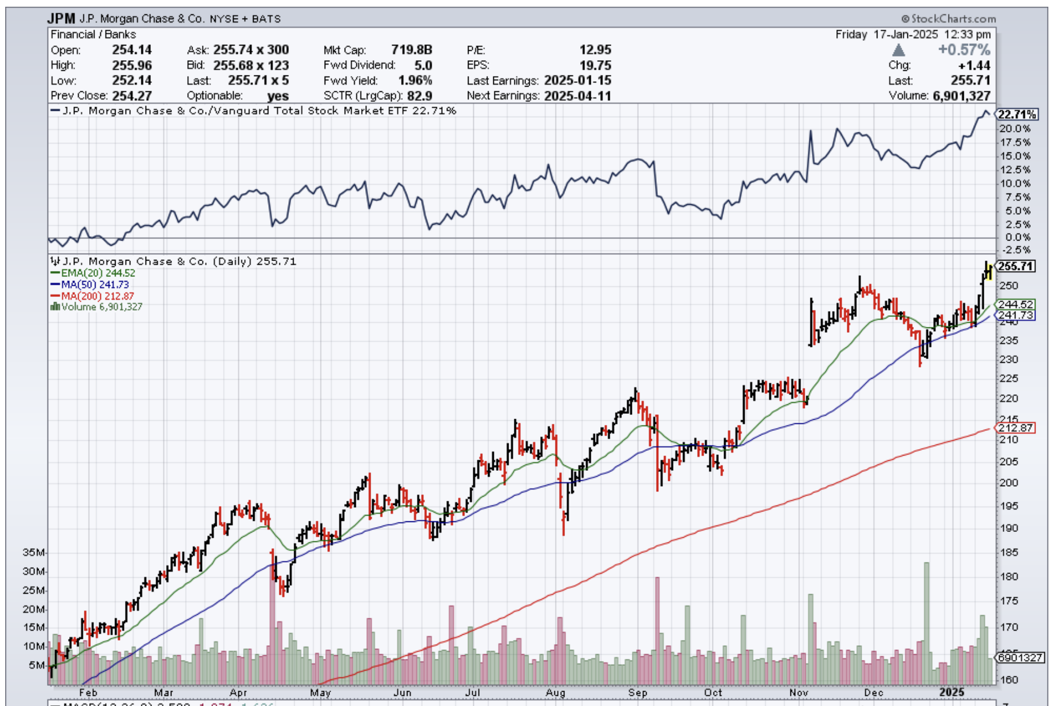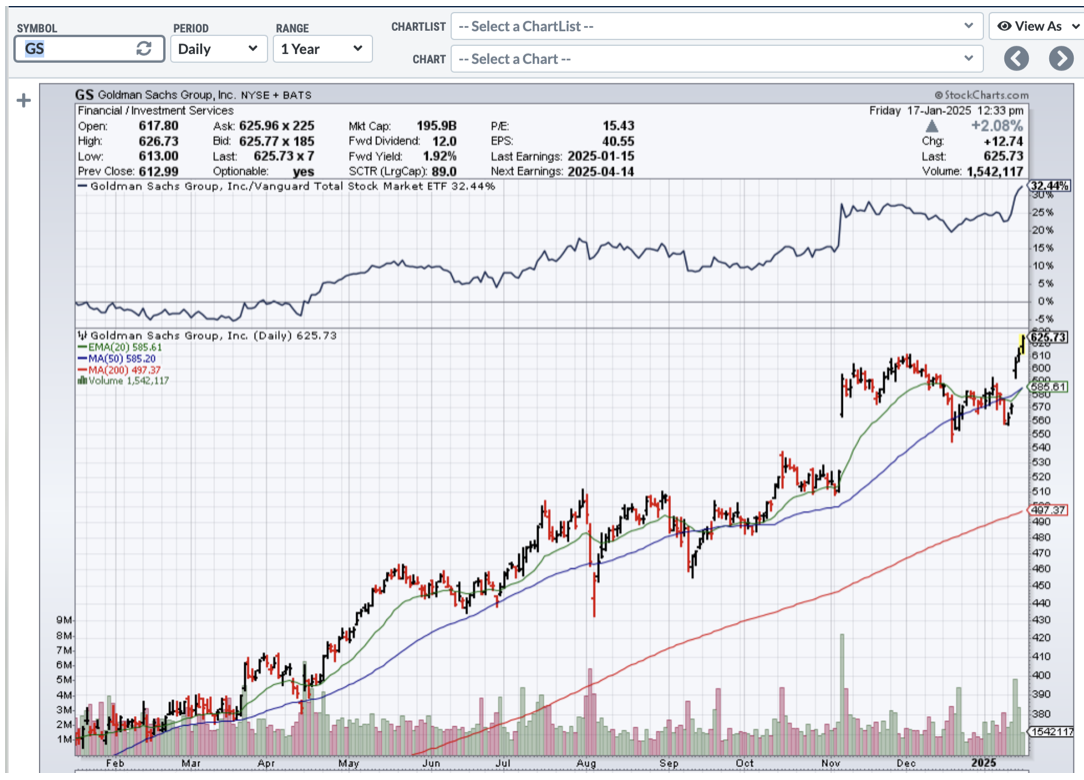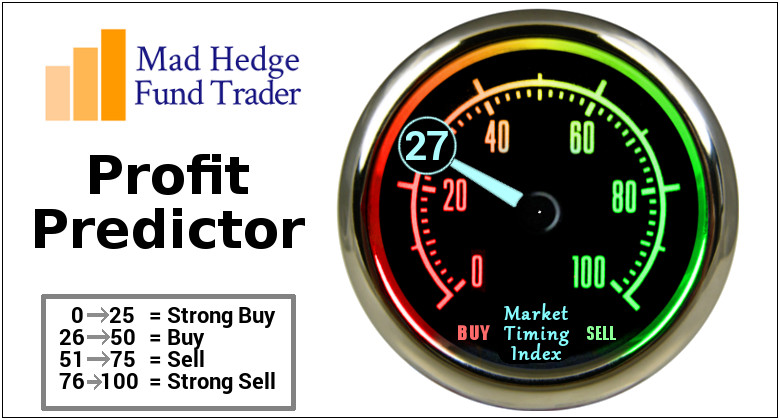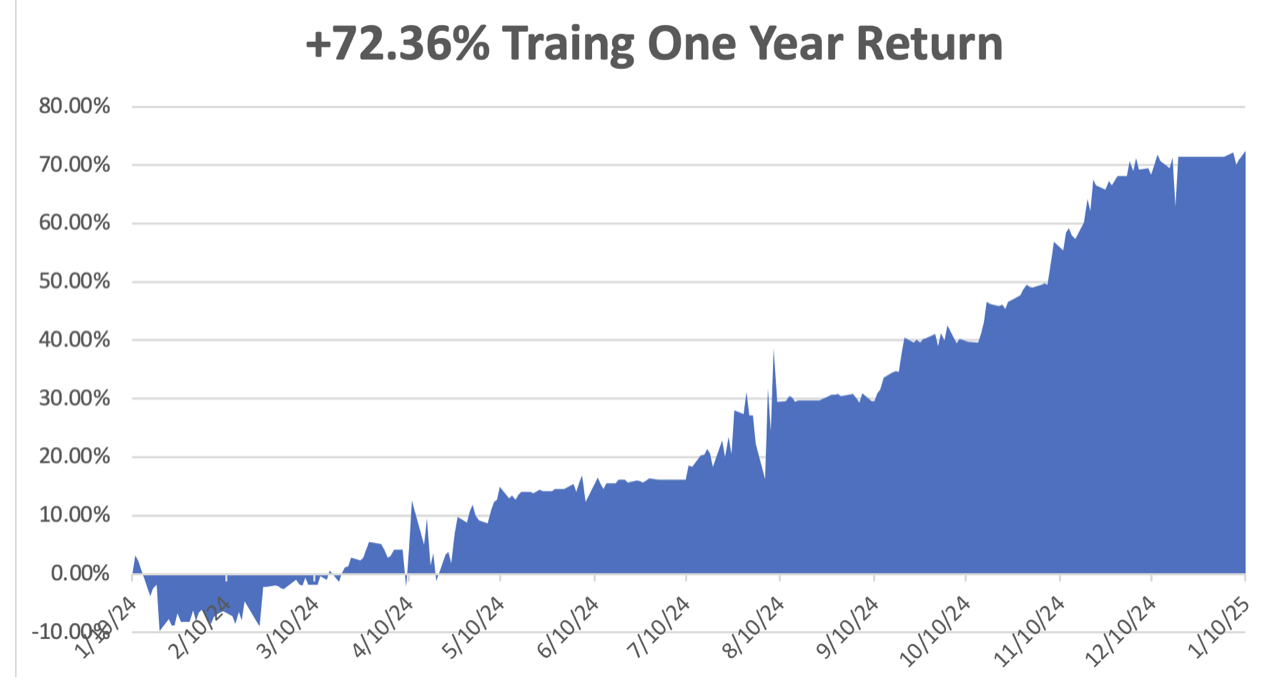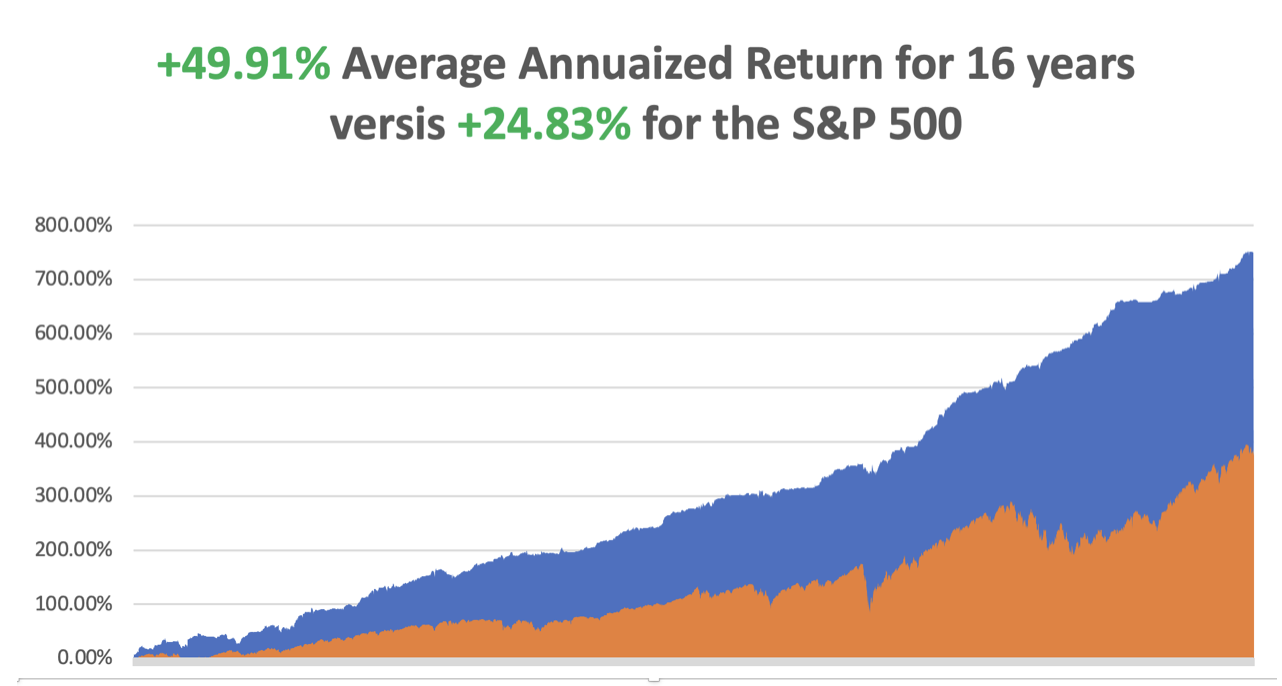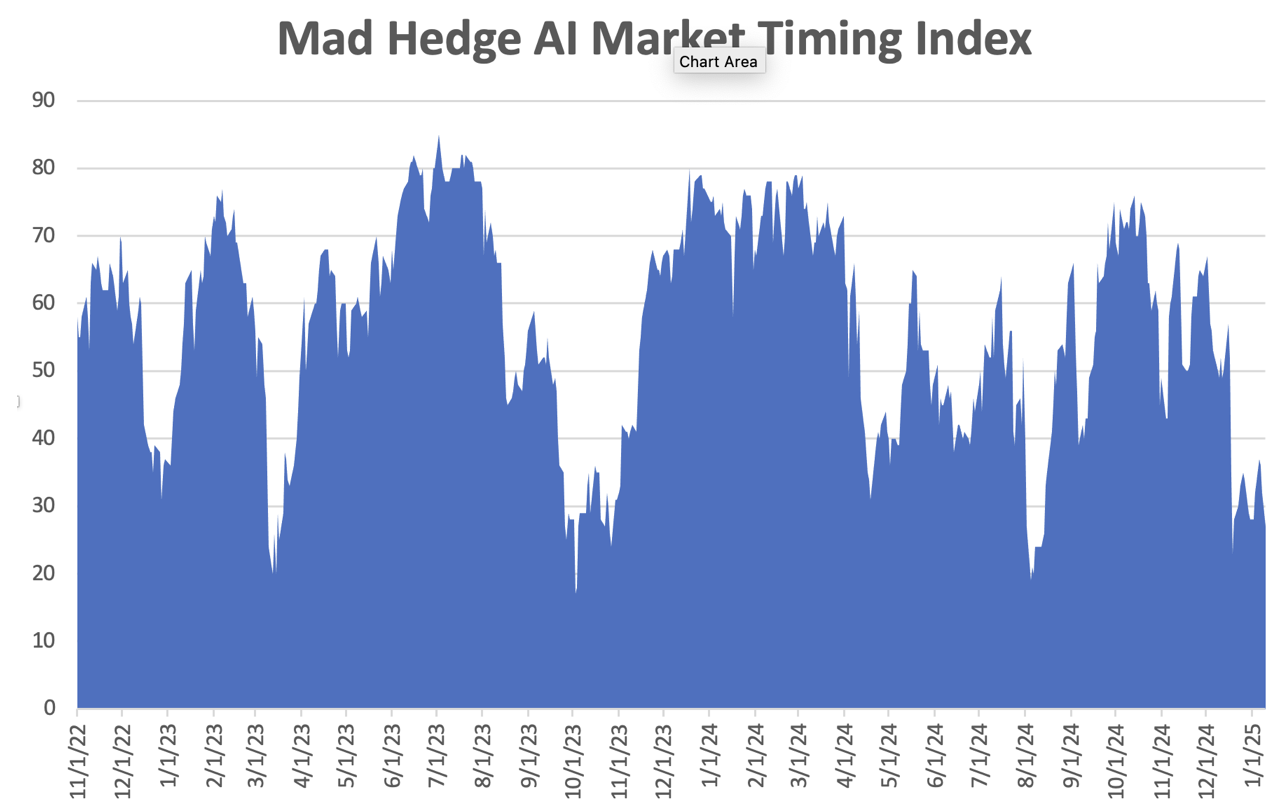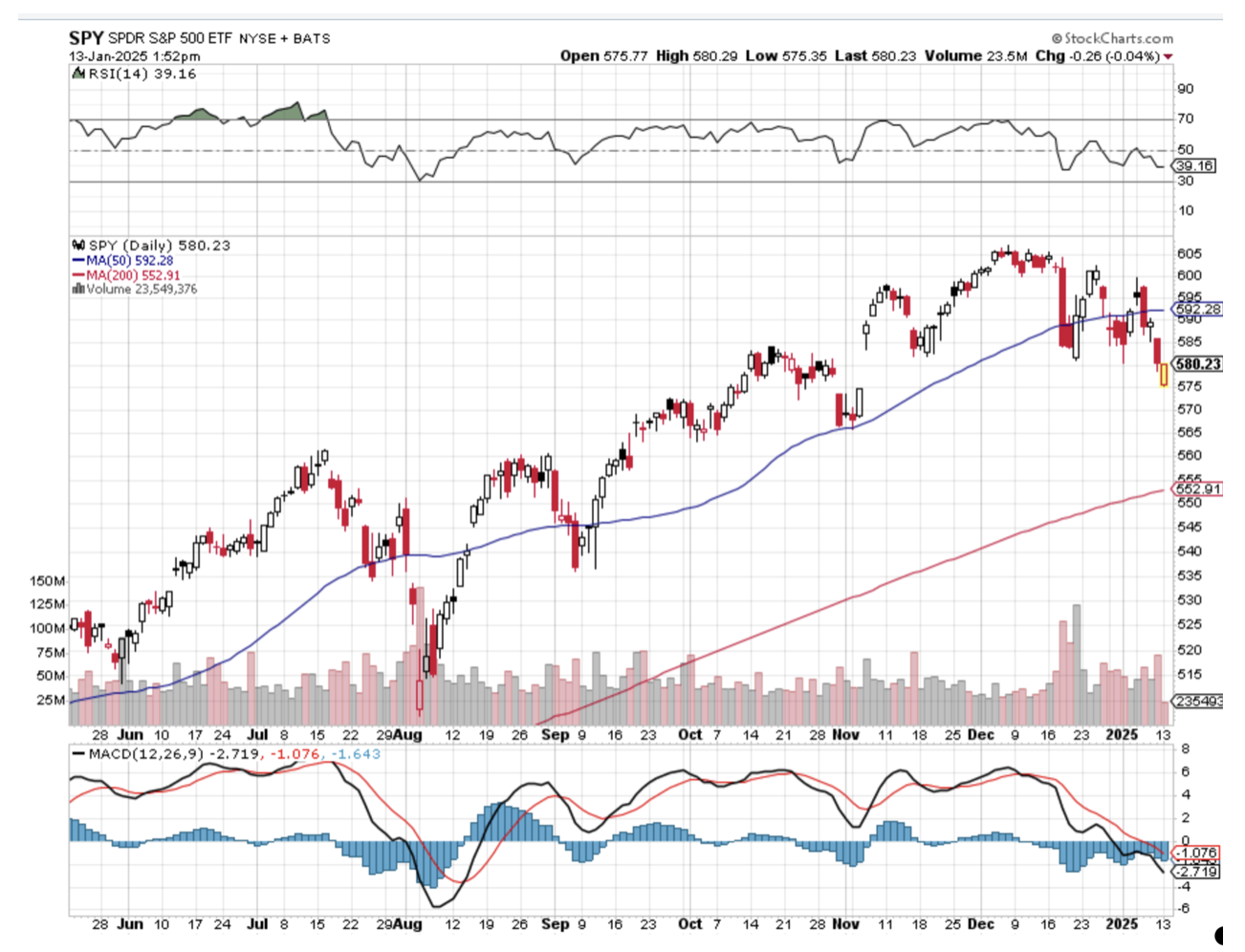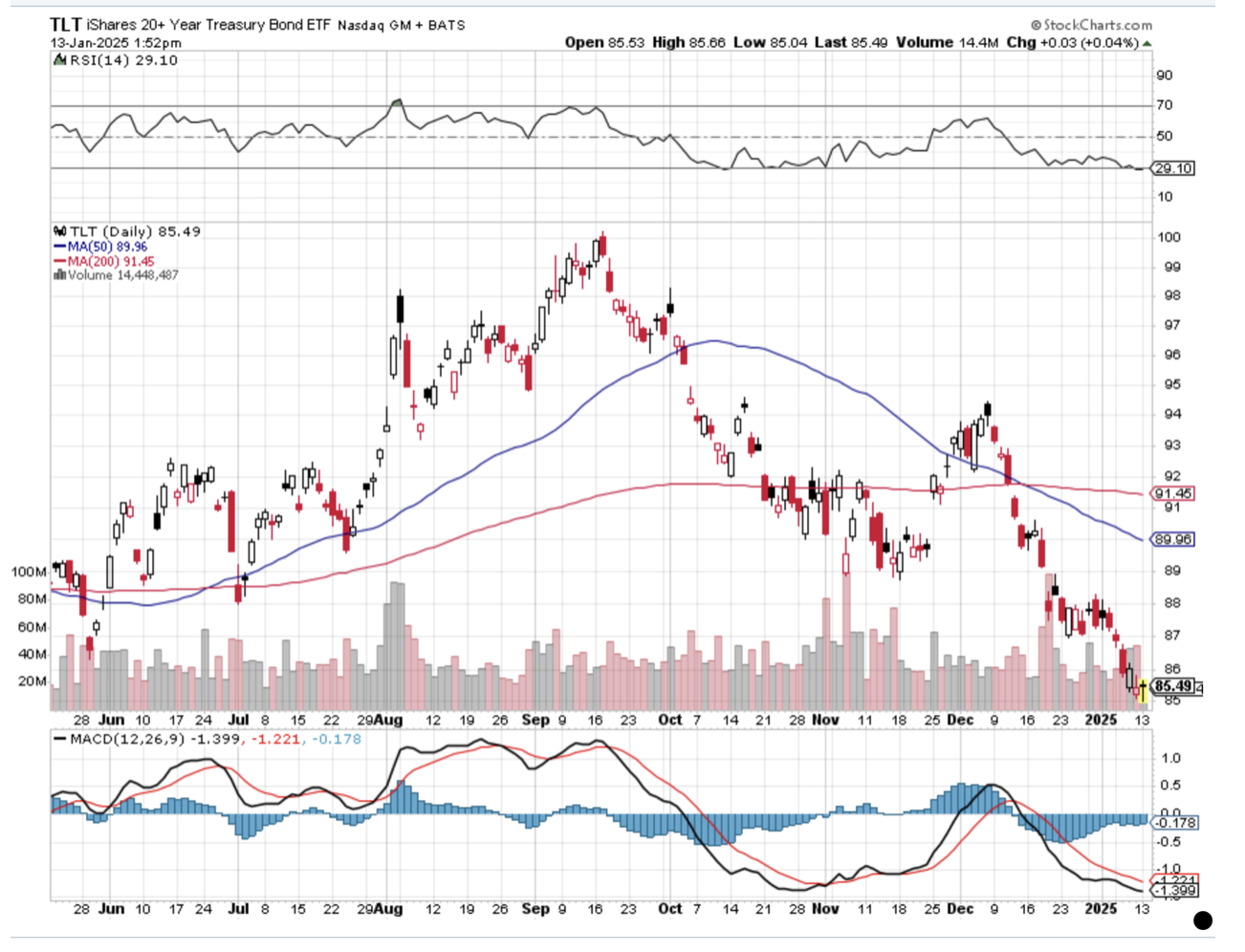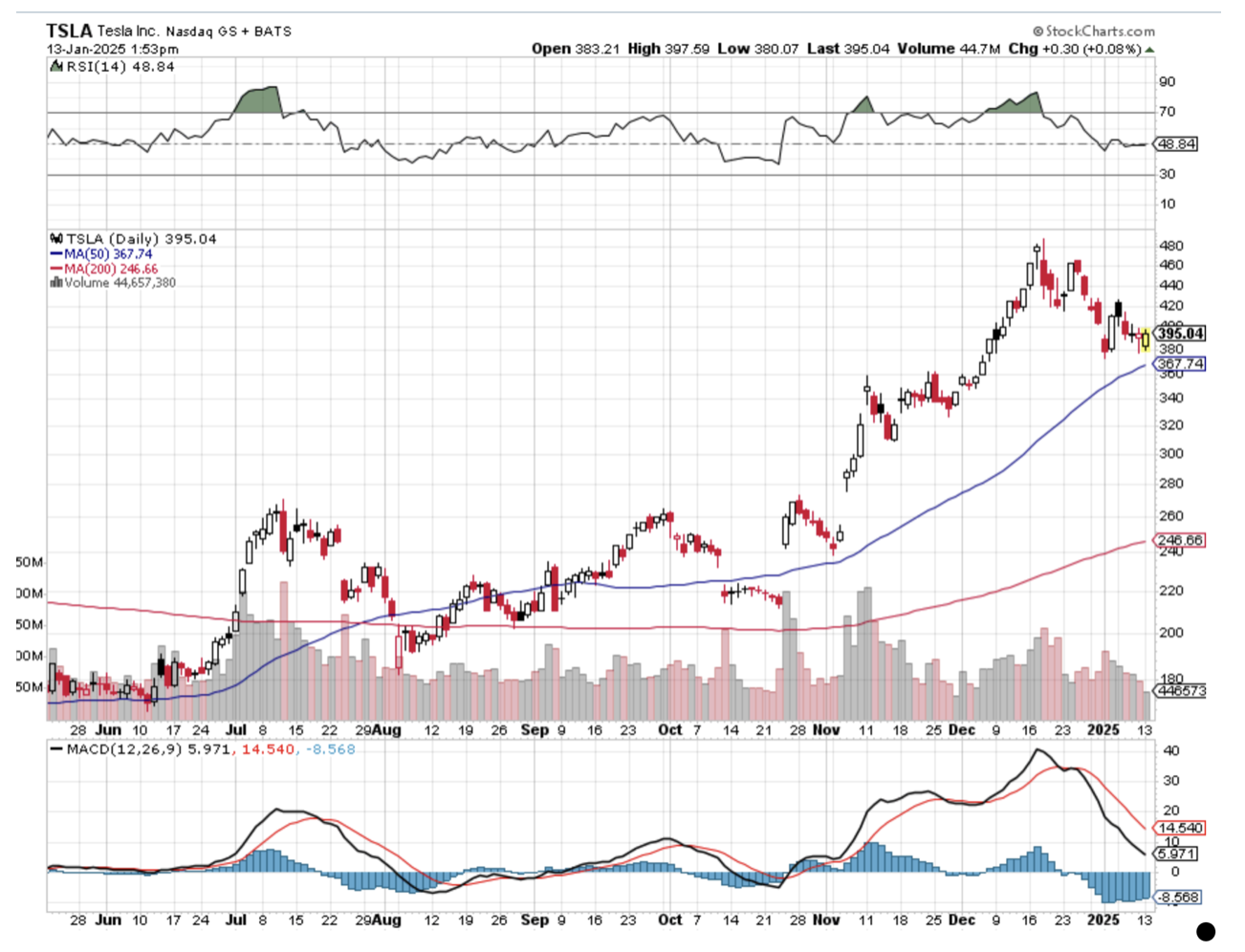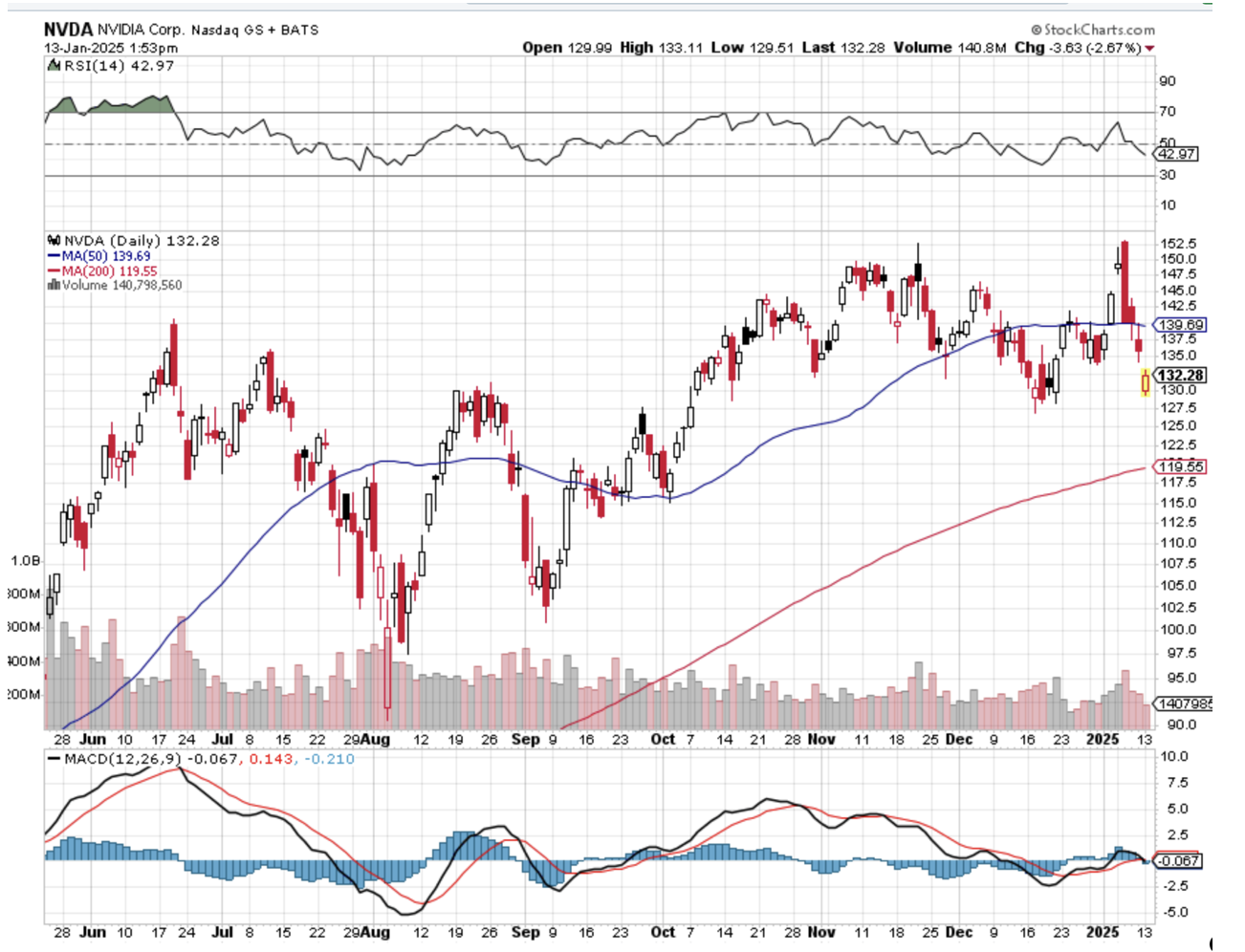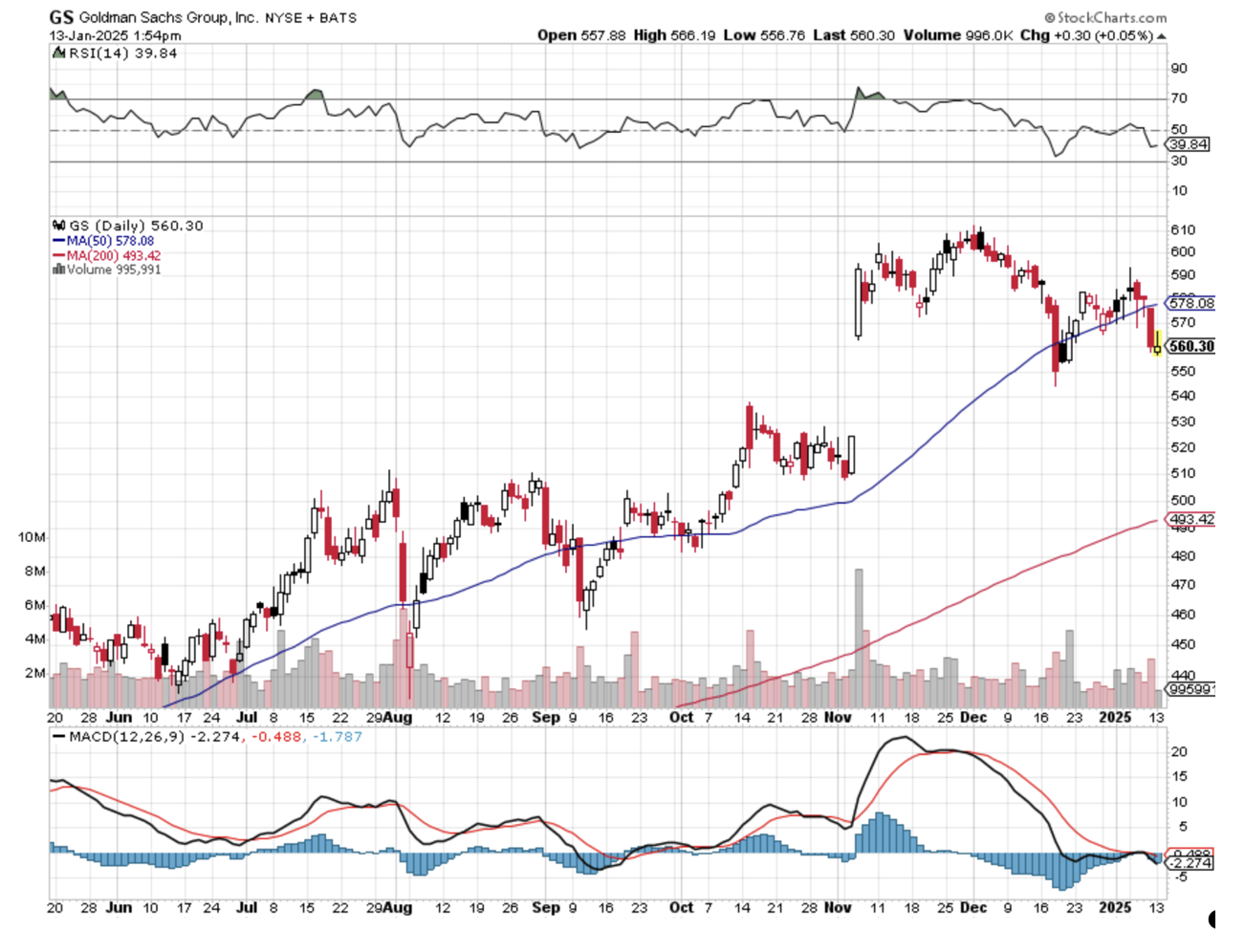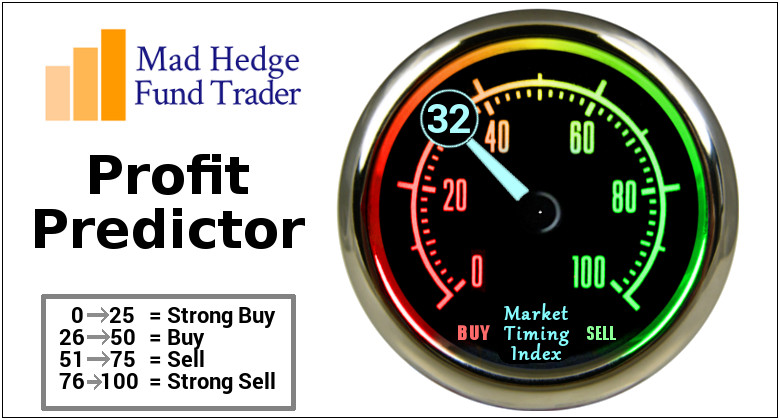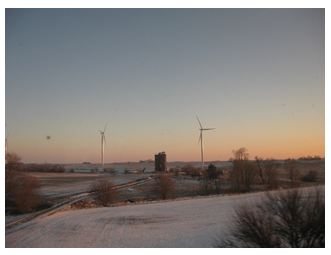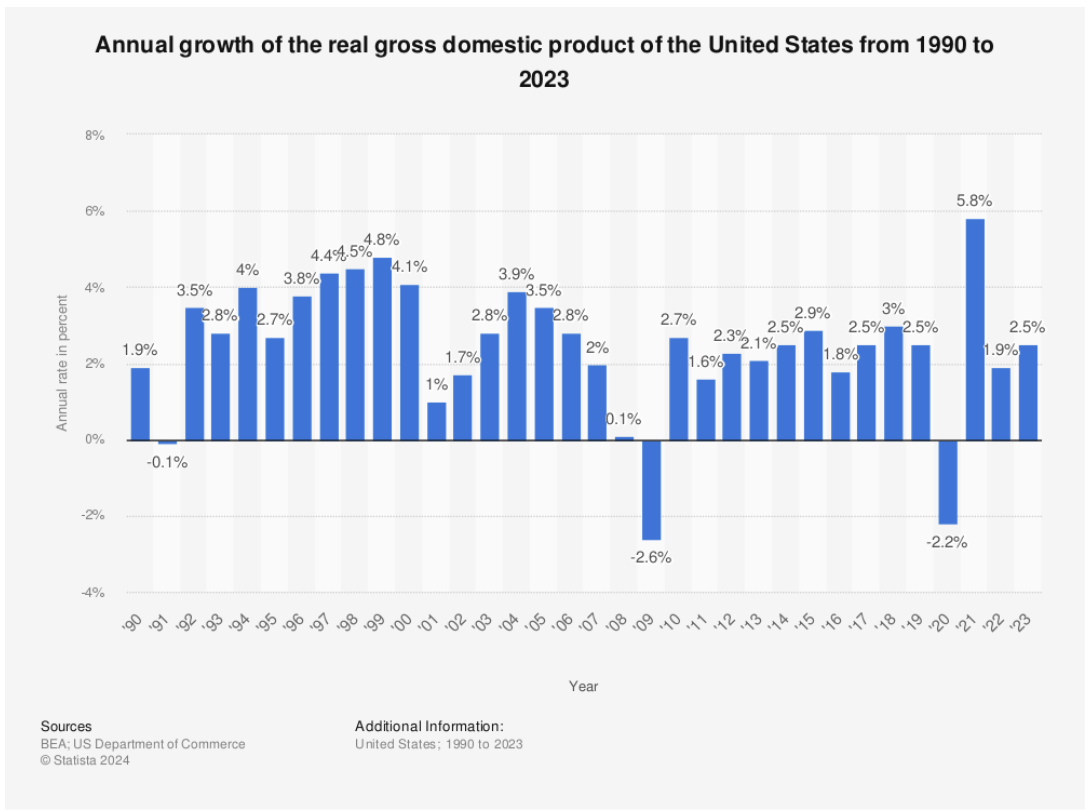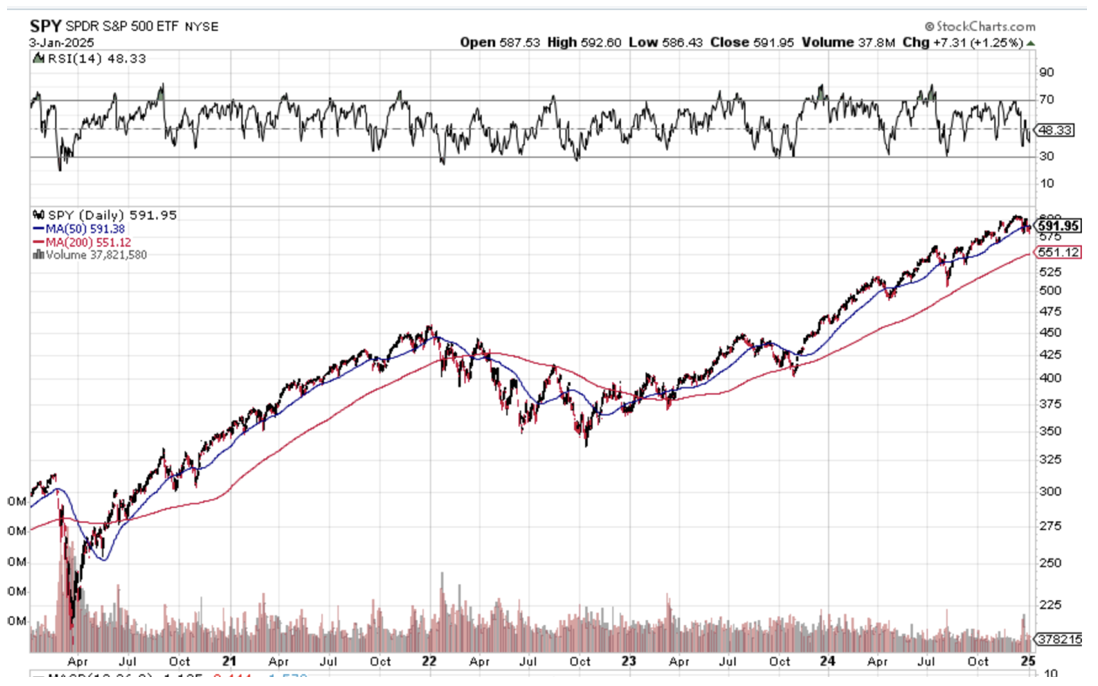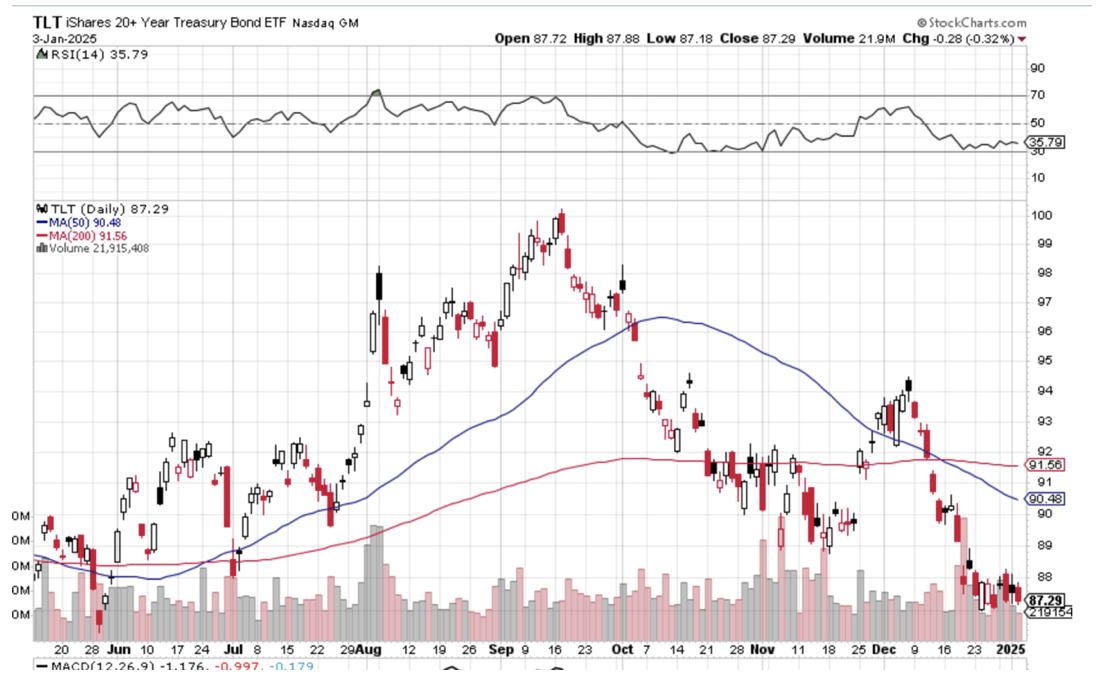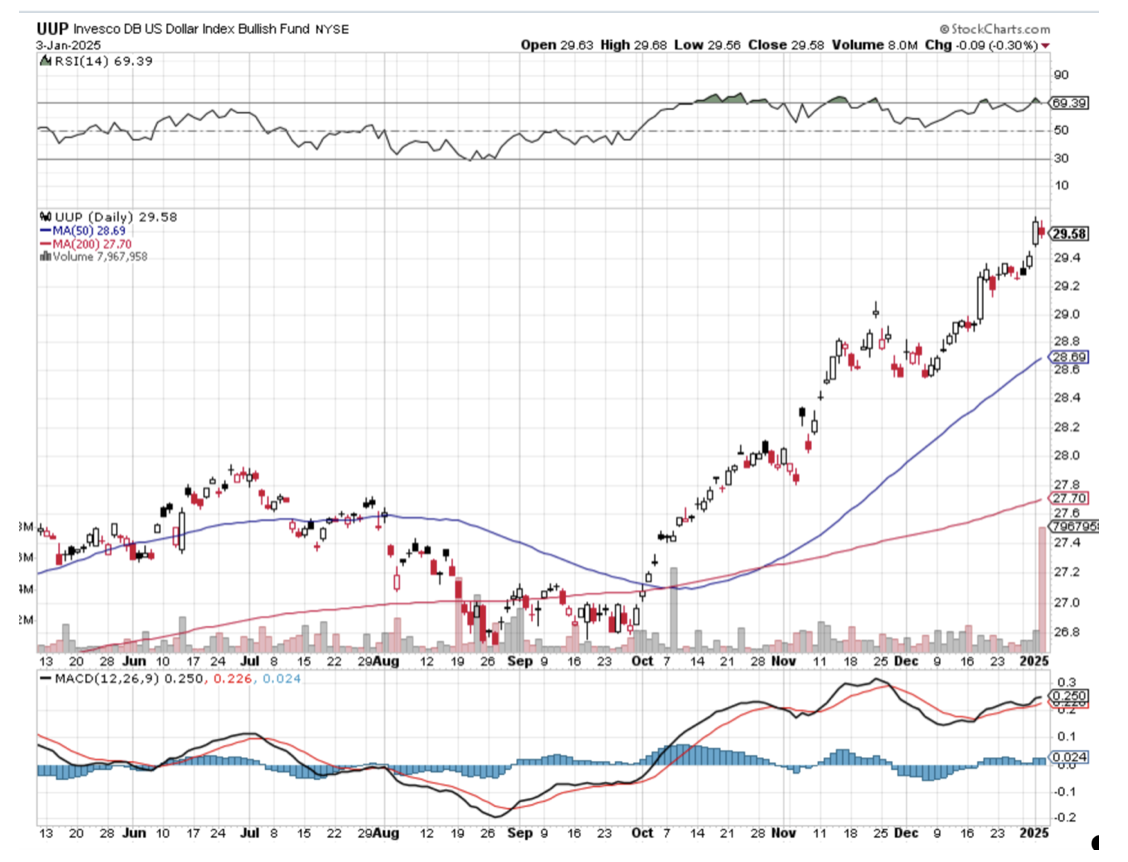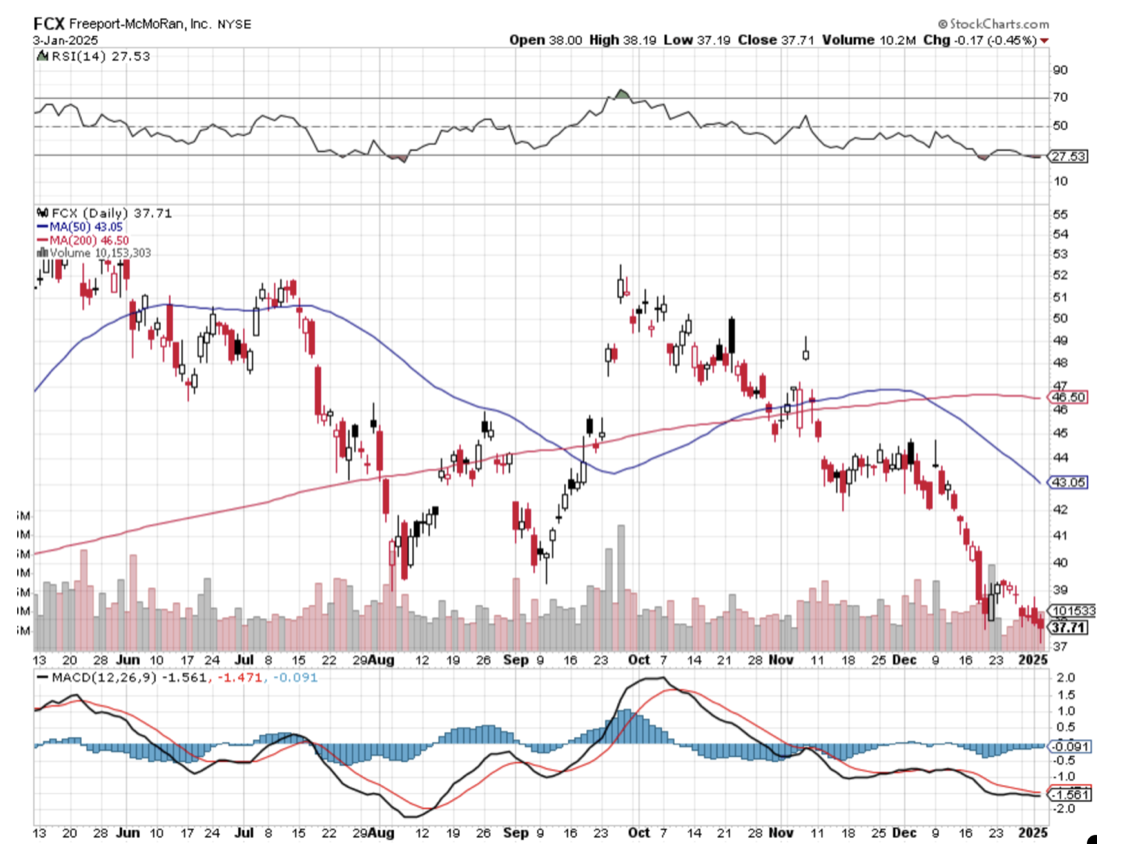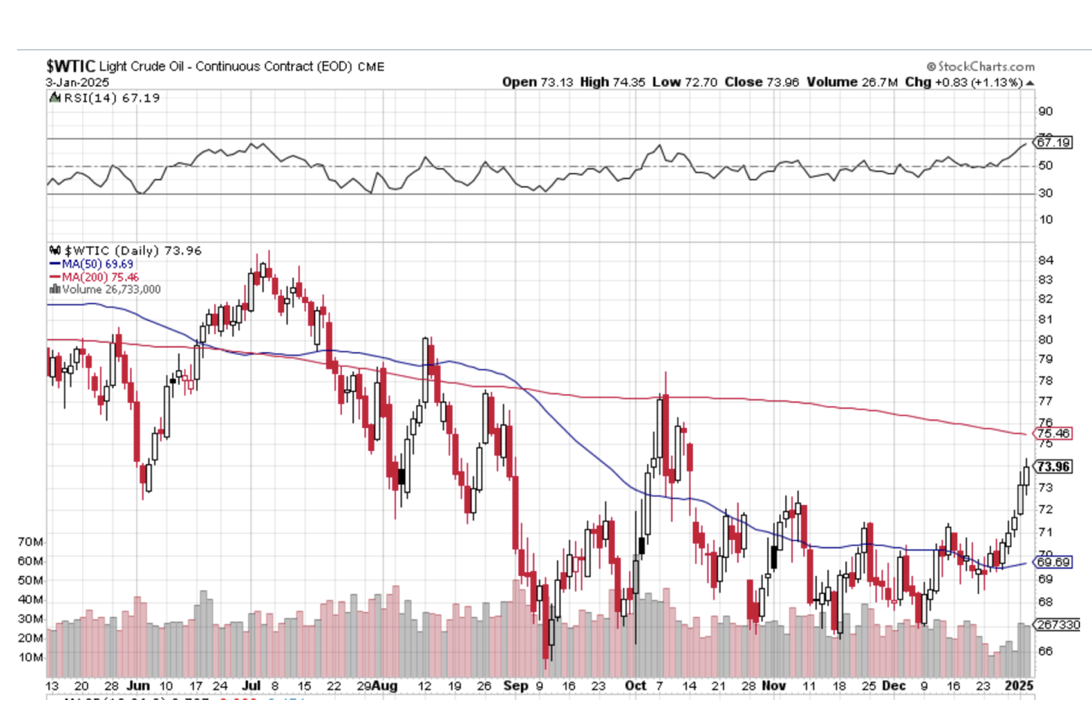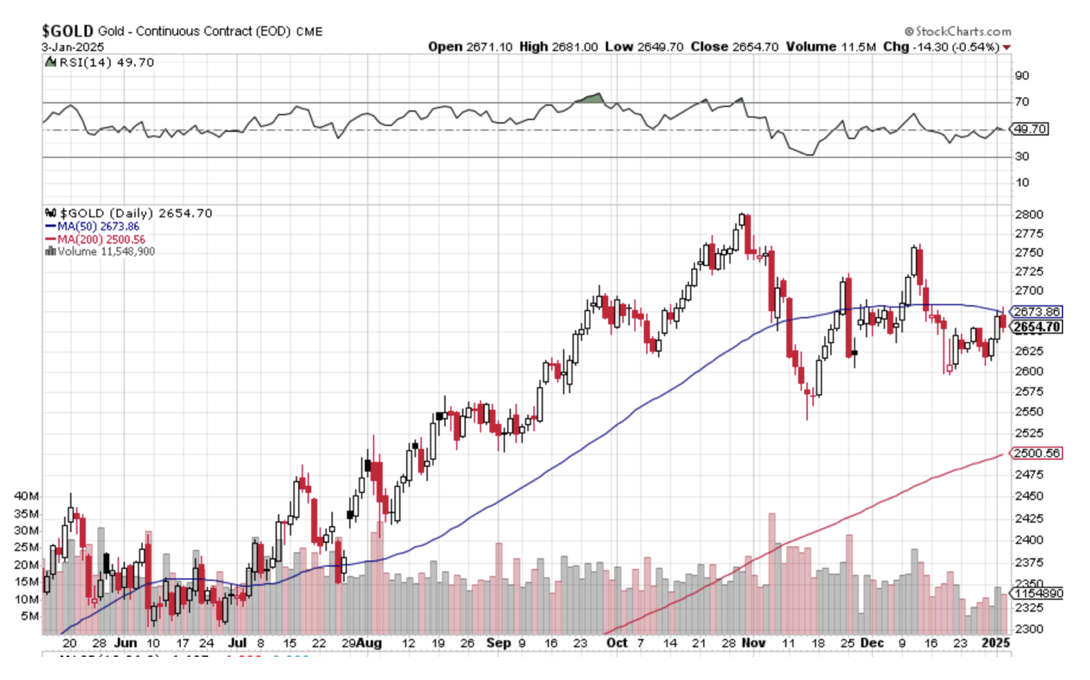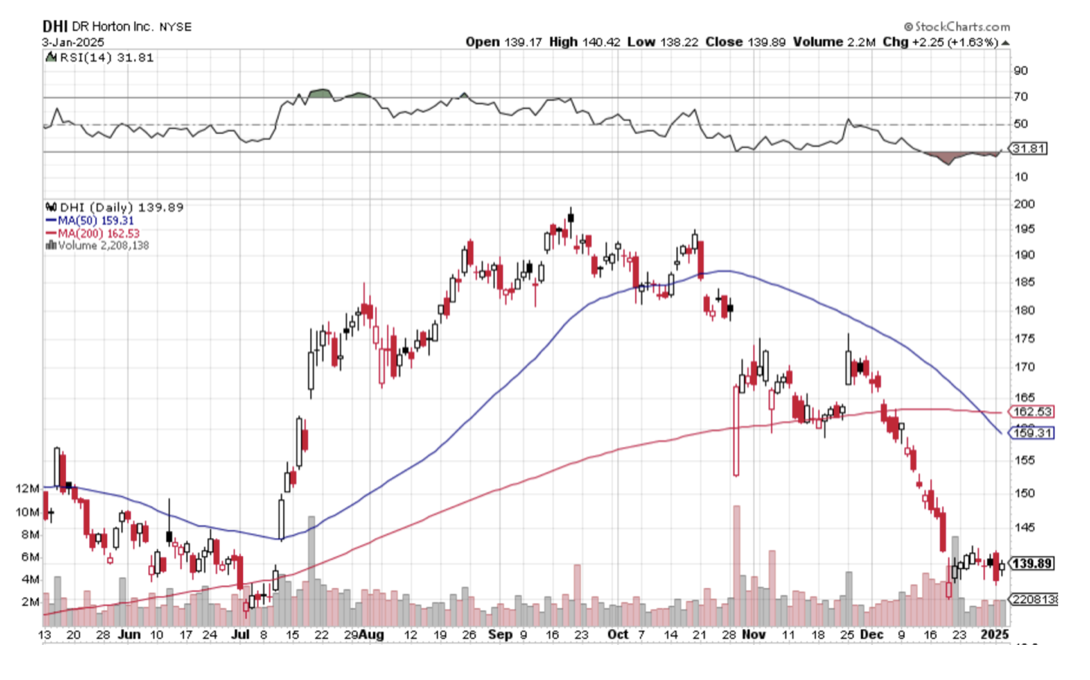While trading one market is hard enough, two is almost more than one can bear. In fact, we have all been trading two markets since 2025 began.
On the up days, it appears that the indexes are about to break out of a tediously narrow trading range. The market’s inability to go down is proof that it has to go up. Thursday was one of those days.
These are followed by down days, it appears that the indexes are about to break down. The market’s inability to stay up is proof that it has to go down. Wednesday was one of those days.
Up….down….up….down. Please excuse me if I get dizzy, which I shouldn’t, as I am a former combat pilot.
The market is calling Trump's bluff, rising in the face of threatened whopping great tariff increases against most of the world. So far, lots of noise, no action. The bark is worse than the bite. As I have been saying all year, ignore the noise and don’t fight the tape.
Which brings me to the price of copper.
Look at the ten-year chart of the red metal below, and you see a pretty positive formation is taking place. You have a similar set up in the chart of Freeport McMoRan, the world’s largest producer of copper.
This is in the face of huge negatives, like the failure of the Chinese economy to recover, the end of all alternative energy subsidies, the government announcing that it will no longer mint pennies, and the ongoing recession in residential real estate.
The seasoned trader in me knows that when you throw bad news on a commodity and it fails to go down, you buy the heck out of it. Is copper discounting the expansion of the grid independent of government assistance? There is more than meets the eye here.
What if the end of the Ukraine War is the big black swan of 2025? The best estimate for the cost of the reconstruction of Ukraine is $1 trillion. That would require a lot of copper, maybe a China’s worth.
It would also present major positives for the global economy. It would give us a peace dividend on the scale of the last one that started in 1991. For a start, energy prices would collapse as restrictions on the export of 10 million barrels a day of Russian oil come off. Ukraine would reclaim its position as one of the world’s largest food exporters, especially wheat and sunflower oil.
I know that Russia is close to running out of weapons. Some two-thirds of Russia’s tanks and planes have been destroyed, and they don’t have the parts to build new ones. That is forcing them to draw on military stockpiles from the 1950s.
I have first-hand knowledge of this. I learned from the Pentagon that the Russian missile fired at me on the eastern front lines failed to explode because it was 55 years old. The best estimate is that Russia will completely run out of some kinds of weapons by this summer.
February has started with a respectable +2.73% return so far. That takes us to a year-to-date profit of +8.53% so far in 2025. My trailing one-year return stands at a spectacular +86.48% as a bad trade a year ago fell off the one-year record. That takes my average annualized return to +50.14% and my performance since inception to +759.42%.
I used the brief weakness in Goldman Sachs (GS) to add a new long. I took profits on my two longs in Tesla on a bounce. That tops up our portfolio with a remaining short in (TSLA) and longs in (NVDA) and (VST). These latter positions expire in three trading days at max profit.
Some 63 of my 70 round trips, or 90%, were profitable in 2023. Some 74 of 94 trades have been profitable in 2024, and several of those losses were really break-even. That is a success rate of +78.72%.
Try beating that anywhere.
US Q4 Profits Hit Three-Year High. With reports in from nearly 70% of the S&P 500 companies as of Wednesday, fourth-quarter earnings are estimated to have risen 15.1% from a year earlier, up from an estimate of 9.6% growth at the start of January. The S&P 500 communication services sector, which includes companies such as Meta Platforms (META), is leading estimated fourth-quarter earnings gains among sectors, with year-over-year growth of 32.2%.
Core Inflation Rate Comes in Red Hot at 0.50%. Overall, advance was broad, led by shelter, food, and medicine. Shelter accounted for nearly 30% of the advance, according to the report from the Bureau of Labor Statistics out Wednesday. The so-called core CPI also climbed by more than forecast. That reflected higher prices for car insurance, airfares, and a record monthly increase in the cost of prescription drugs. It looks like no interest rate cuts for 2025.
PPI comes in Hot, reversing the gains on inflation of the past two years. The Producer Price Index, a measurement of average price changes seen by producers and manufacturers, rose 0.4% on a monthly basis and 3.5% for the 12 months ended in January. That held steady with December, which was upwardly revised to 3.5% according to Bureau of Labor Statistics data released Thursday.
US announced European Tariffs this Week, tanking stocks on Friday. Steel and metals shares are surging this morning. It’s pretty clear that markets hate all things tariff-related. Can we talk more about deregulation, which markets love? The reality is that markets don’t know how to price in Trump, swinging back and forth between euphoria one moment to Armageddon another. Best case, markets flatline. Worst case, they crash.
Gold (GLD) is headed for $3,000, my long-term target, on central bank and flight to safety buying. What’s the next target? $5,000 is the current turmoil in Washington continues. Notice that it’s the physical metal that’s moving, not the miners.
Foreign Investors Continue to Soak Up US Debt, seeking higher interest rates in an appreciating currency. Americans own 55% of the outstanding $36 trillion in US debt, while foreign investors own 24%, and the Federal Reserve 13%.
Wall Street Souring on Magnificent Seven. The market stronghold has diminished slightly, as the cohort struggles to meet ever-loftier expectations, and investors rotate into other parts of the market such as small caps. Tech titans also took a hit in late January after the emergence of Chinese startup DeepSeek raised concerns over how much spending will be needed to implement AI capabilities.
Market is Giving Up on any Interest Rate Cuts this Year, as the prospects of rising inflation from trade wars weigh on the market. Economists have warned that a wide-scale trade war could significantly raise prices, and consumers appear to be worried as well. Respondents to the University of Michigan’s consumer sentiment poll released Friday indicated they expect inflation to run at a 4.3% rate a year from now, up a full percentage point from the January reading.
Tesla Tanks 7%, and down 34% since December after Chinese competitor BYD announces a partnership with DeepSeek. The move is expected to accelerate BYD’s move into full self-driving. Tesla sales are falling in all major markets. Call it DeepSeek hit part 2.
Weekly Jobless Claims Fall. Initial claims for state unemployment benefits fell 7,000 to a seasonally adjusted 213,000 for the week ended February 8, the Labor Department said on Thursday. Economists polled by Reuters had forecast 215,000 claims for the latest week.
My Ten-Year View – A Reassessment
We have to substantially downsize our expectations of equity returns in view of the election outcome. My new American Golden Age, or the next Roaring Twenties, is now looking at multiple gale force headwinds. The economy will completely stop decarbonizing. Technological innovation will slow. Trade wars will exact a high price. Inflation will return. The Dow Average will rise by 600% to 240,000 or more in the coming decade. The new America will be far more efficient and profitable than the old.
My Dow 240,000 target has been pushed back to 2035.
On Monday, February 17, markets are closed for President's Day.
On Tuesday, February 18 at 8:30 AM EST, the New York Empire State Manufacturing Index is released.
On Wednesday, February 19 at 8:30 AM EST, the New Housing Starts are printed.
On Thursday, February 20 at 8:30 AM, the Weekly Jobless Claims are disclosed.
On Friday, February 21 at 8:30 AM, the Existing Home Sales are announced. At 2:00 PM the Baker Hughes Rig Count is printed.
As for me, I was having lunch at the Paris France casino in Las Vegas at Mon Ami Gabi, one of the top ten grossing restaurants in the United States. My usual waiter, Pierre from Bordeaux, took care of me in his typical ebullient way, graciously letting me practice my rusty French.
As I finished an excellent but calorie-packed breakfast (eggs Benedict, caramelized bacon, hash browns, and a café au lait), I noticed an elderly couple sitting at the table next to me. Easily in their 80s, they were dressed to the nines and out on the town.
I told them I wanted to be like them when I grew up.
Then I asked when they first went to Paris, expecting a date sometime after WWII. The gentleman responded, “Seven years ago”.
And what brought them to France?
“My father is buried there. He’s at the American Military Cemetery at Colleville-sur-Mer along with 9,386 other Americans. He died on Omaha Beach on D-Day. I went for the D-Day 70th anniversary.” He also mentioned that he never met his dad, as he was killed in action weeks after he was born.
I reeled with the possibilities. First, I mentioned that I participated in the 40-year D-Day anniversary with my uncle, Medal of Honor winner Mitchell Paige, and met with President Ronald Reagan.
We joined the RAF fly-past in my own private plane and flew low over the invasion beaches at 200 feet, spotting the remaining bunkers and the rusted-out remains of the once floating pier. Pont du Hoc is a sight to behold from above, pockmarked with shell craters like the moon. When we landed at a nearby airport, I taxied over railroad tracks that were the launch site for the German V1 “buzz bomb” rockets.
D-Day was a close-run thing and was nearly lost. Only the determination of individual American soldiers saved the day. The US Navy helped too, bringing destroyers right to the shoreline to pummel the German defenses with their five-inch guns. Eventually, battleships working in concert with very lightweight Stinson L5 spotter planes made sure that anything the Germans brought to within 20 miles of the coast was destroyed.
Then the gentleman noticed the gold Marine Corps pin on my lapel and volunteered that he had been with the Third Marine Division in Vietnam. I replied that my father had been with the Third Marine Division during WWII at Bougainville and Guadalcanal and that I had been with the Third Marine Air Wing during Desert Storm.
I also informed him that I had led an expedition to Guadalcanal two years ago looking for some of the 400 Marines still missing in action. We found 30 dog tags and sent them to the Marine Historical Division at Quantico, Virginia, for tracing. I proudly showed them my pictures.
When the stories came back, it turned out that many survivors were children now in their 80s who had never met their fathers because they were killed in action on Guadalcanal.
Small world.
I didn’t want to infringe any further on their fine morning out, so I excused myself. He said Semper Fi, the Marine Corps motto, thanked me for my service, and gave me a fist pump and a smile. I responded in kind and made my way home.
Oh, and say “Hi” when you visit Mon Ami Gabi. Tell Pierre that John Thomas sent you and give him a big tip. It’s not easy for a Frenchman to cater to all these loud Americans.
Third Marine Air Wing
The D-Day Couple
The American Military Cemetery at Colleville-sur-Mer
Stay Healthy,
John Thomas
CEO & Publisher
The Diary of a Mad Hedge Fund Trader


